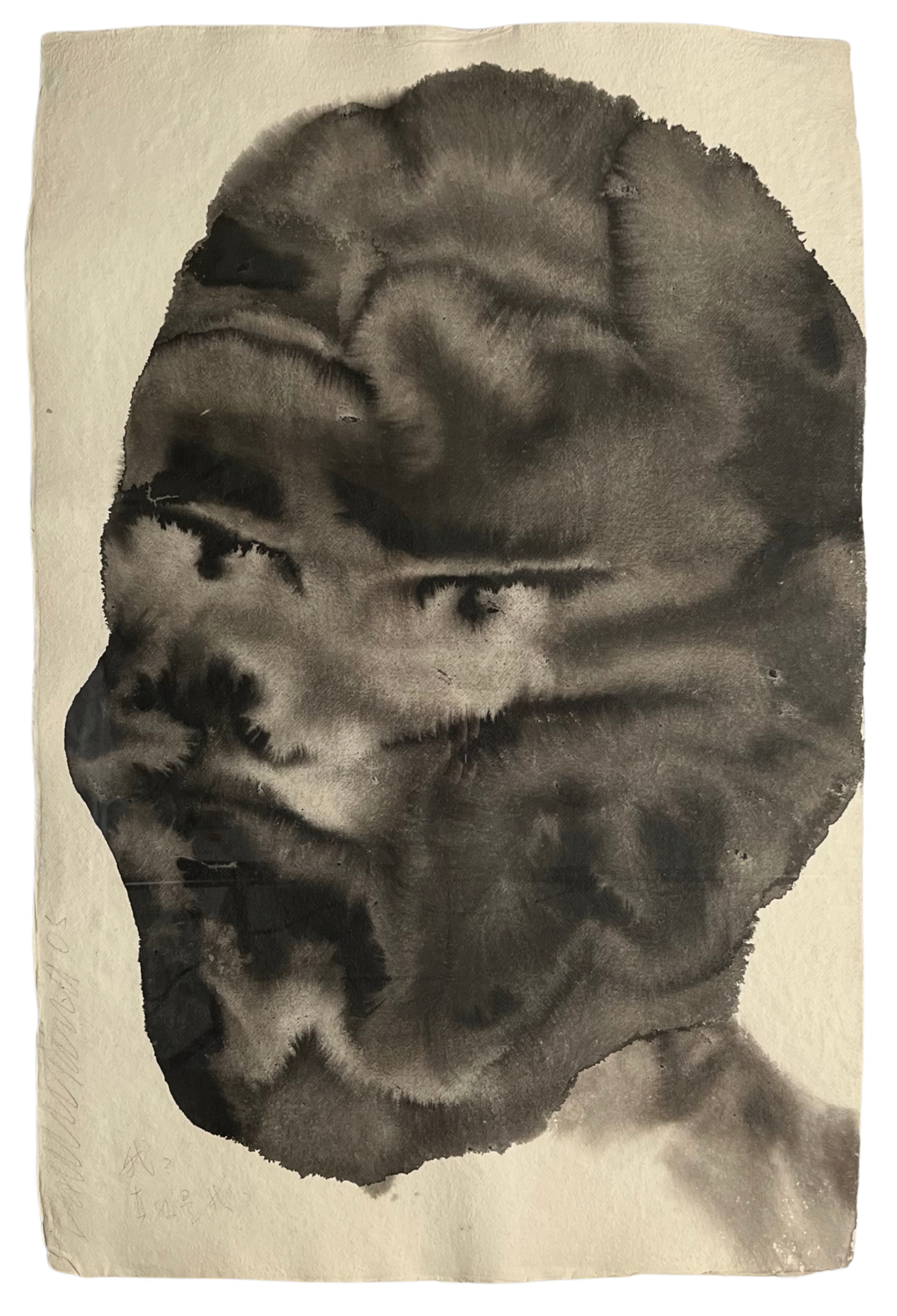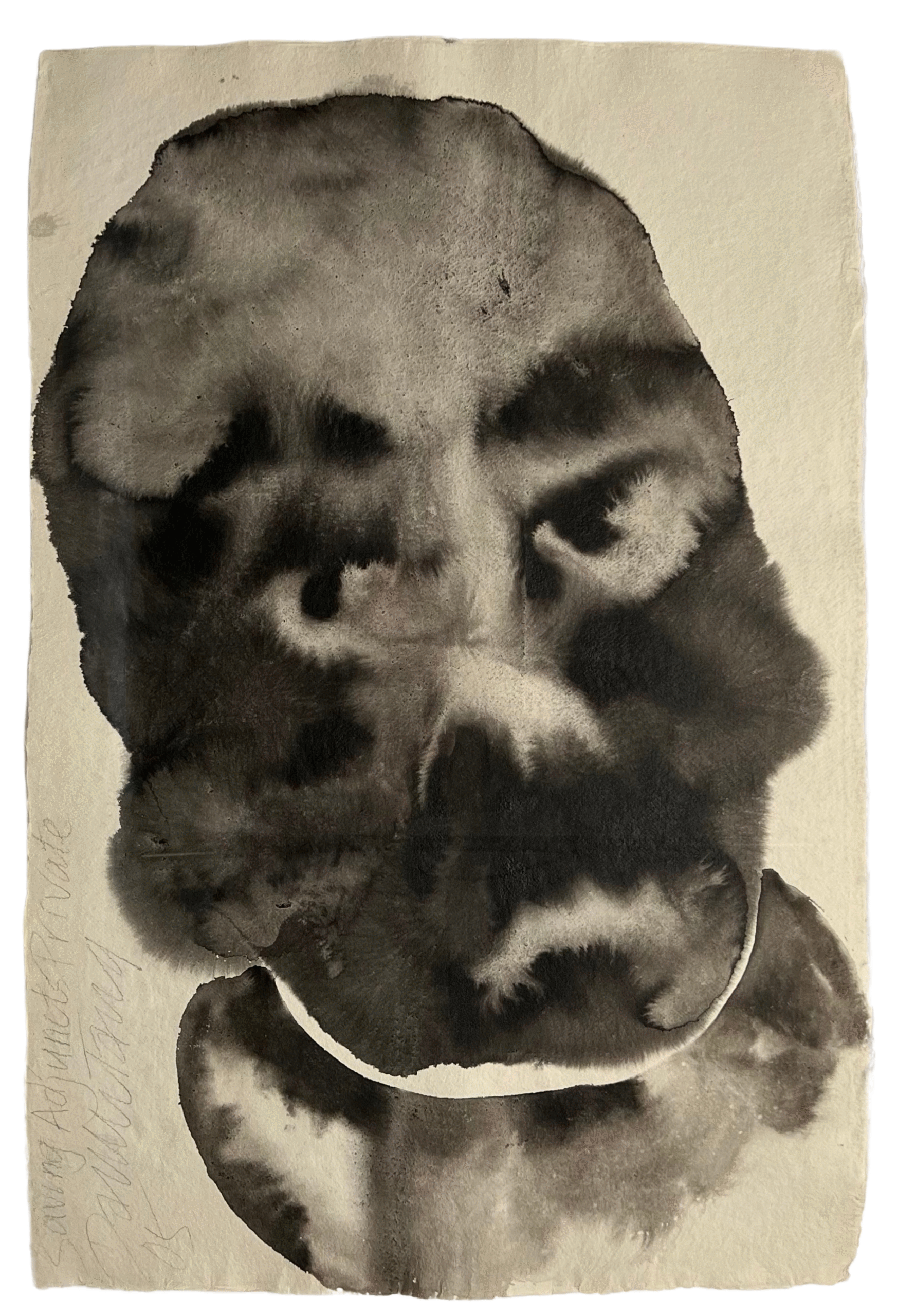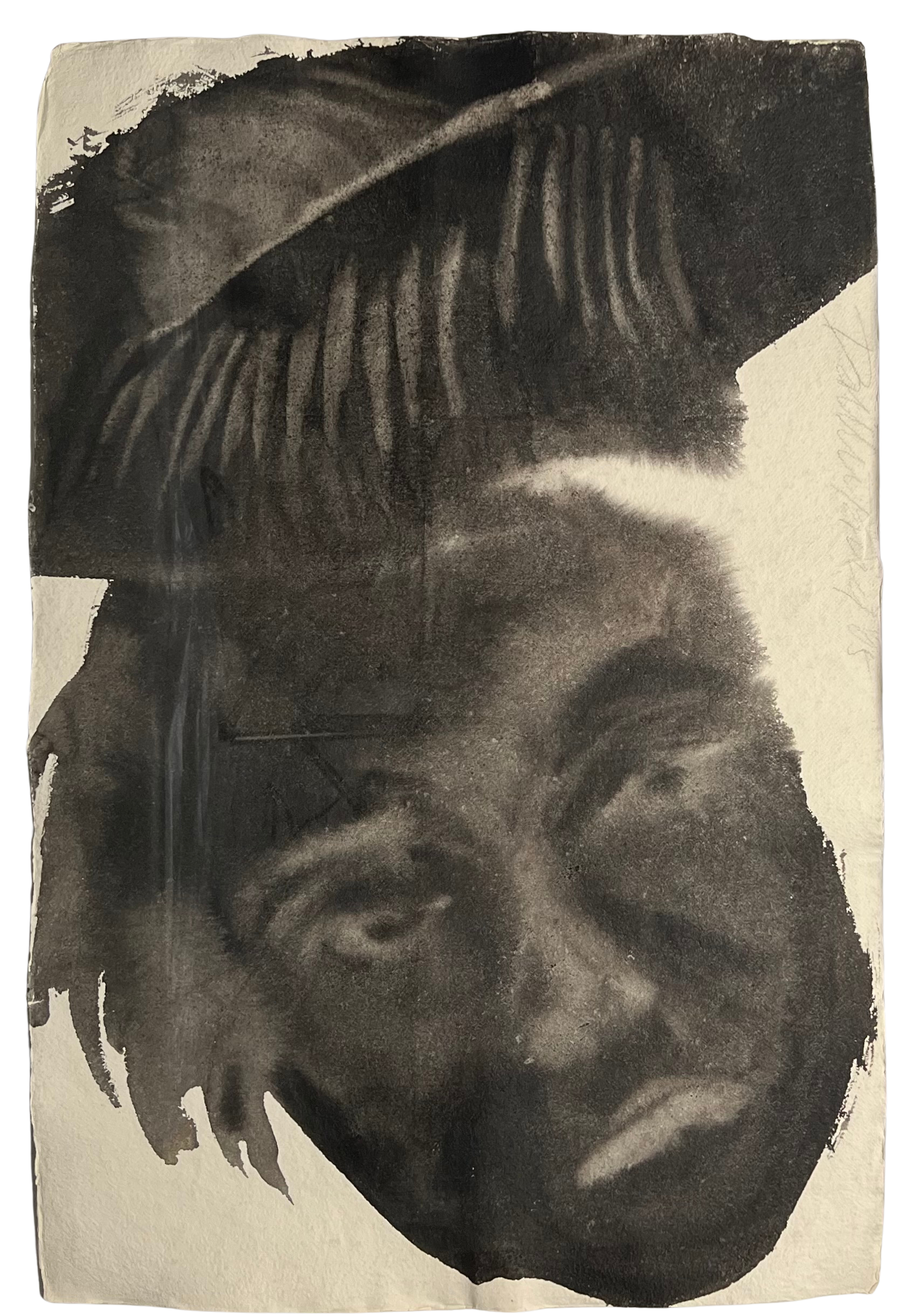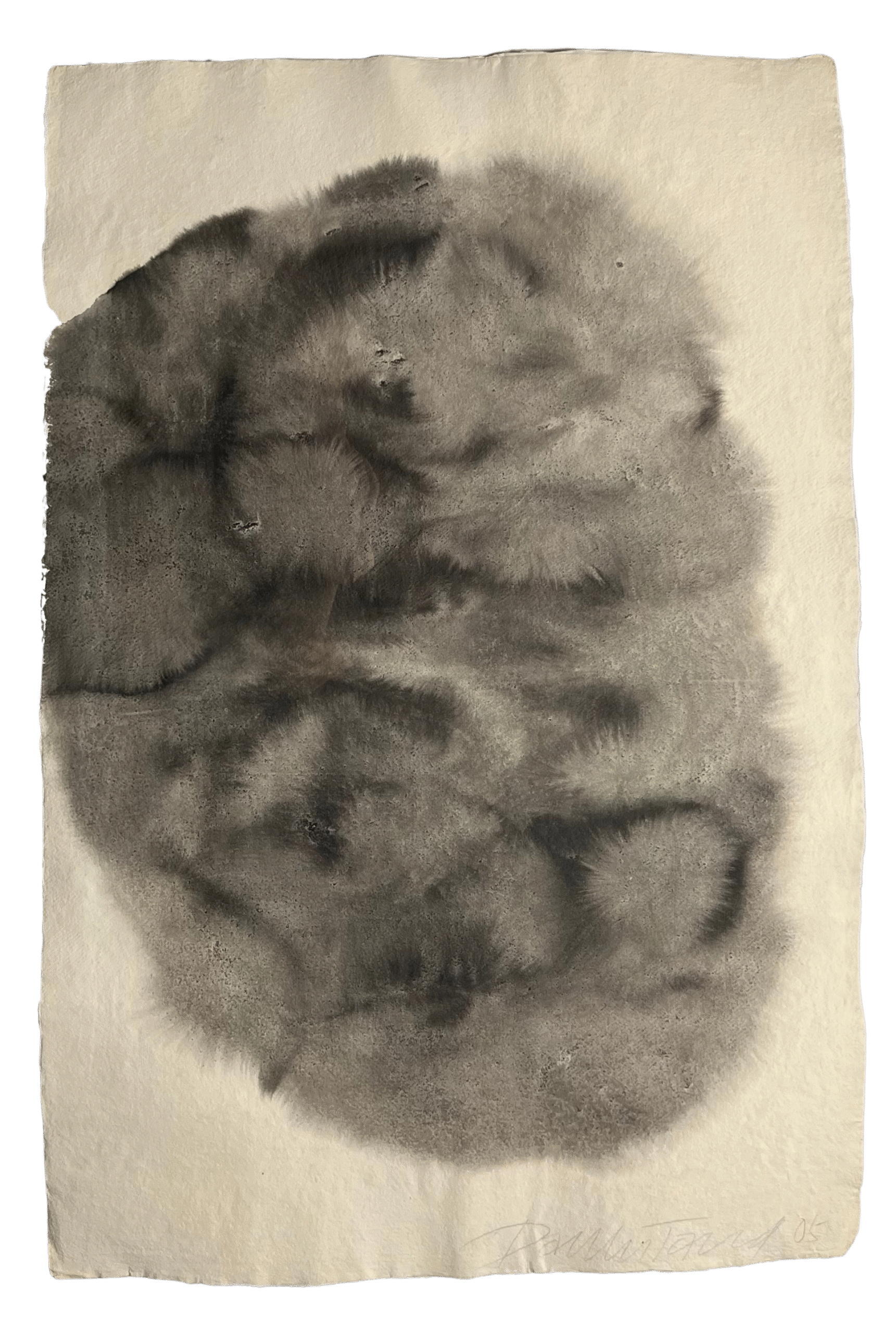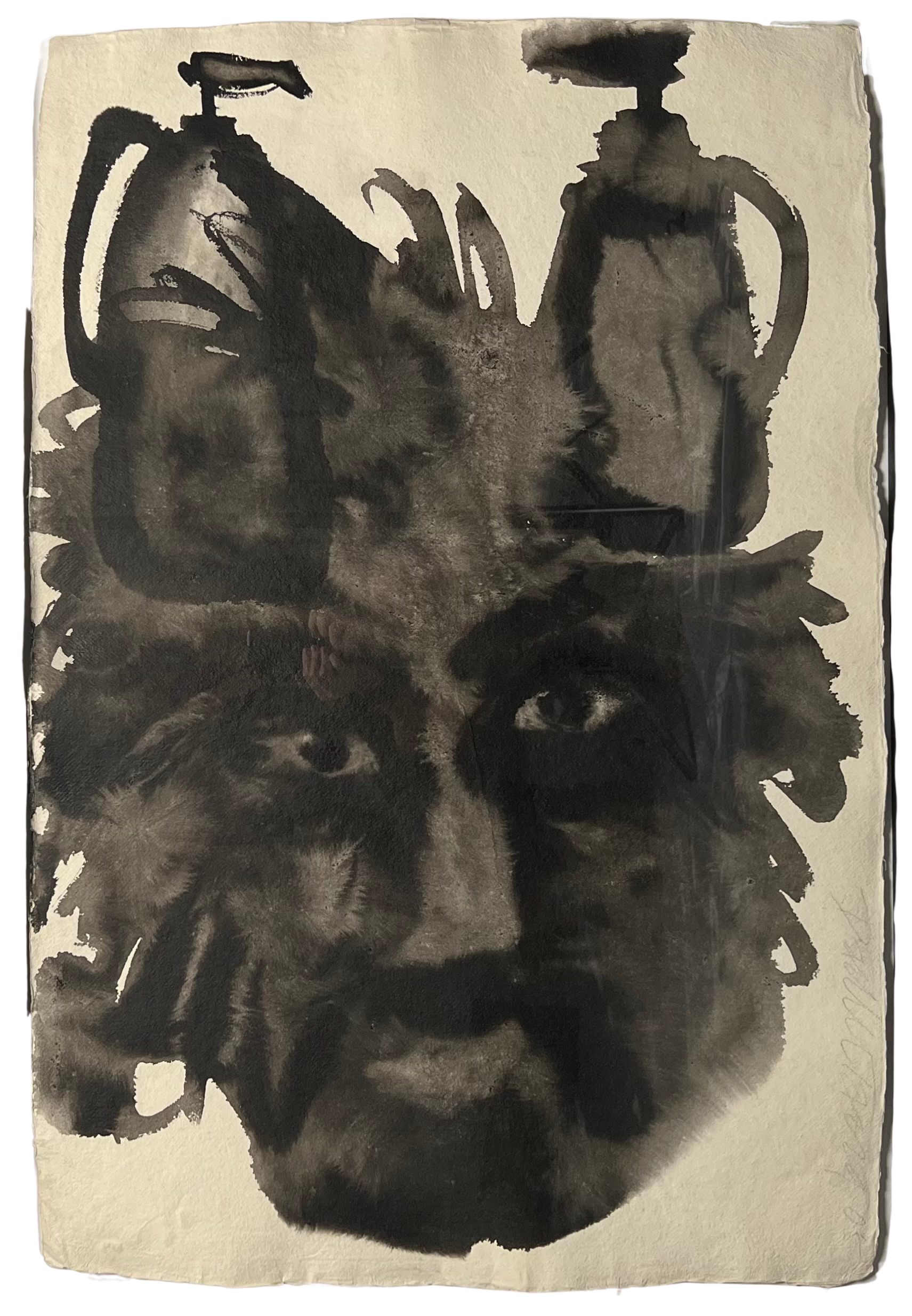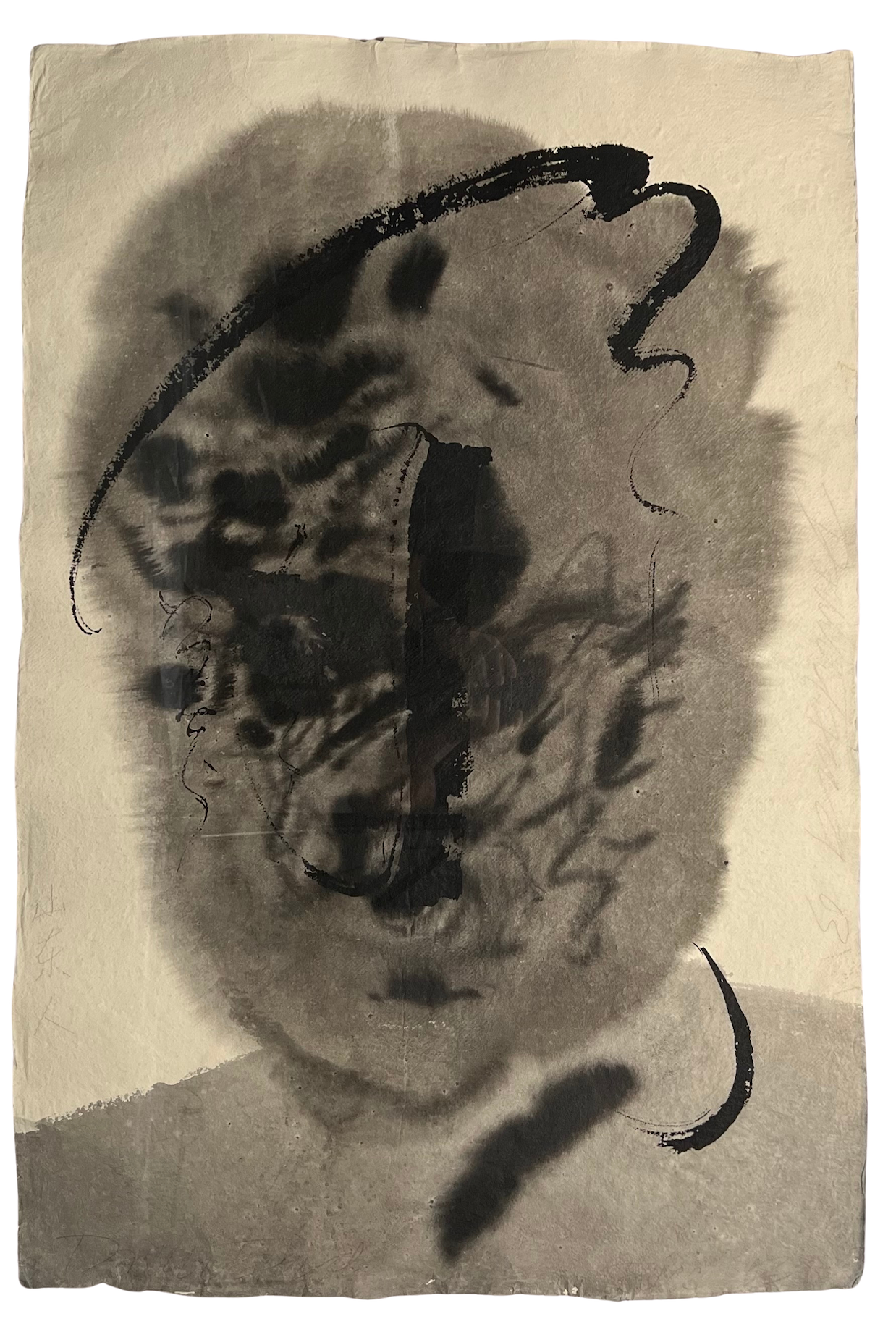Past
COLLECT:ED
05 July – 05 August 2025
Tue – Sat: 11am – 6pm
Sun: 12pm – 5pm
39 Keppel Rd, #03-01, Lobby A
Tanjong Pagar Distripark
Singapore 089065

Exhibition Details:
COLLECT:ED
05 July – 05 August 2025
Tue – Sat: 11am – 6pm
Sun: 12pm – 5pm
Artists:
Alix de Fautereau
Bernard Buffet
Chen Chunmu
Chu Teh-Chun
Chua Ek Kay
Chua Soo Bin
Cheong Soo Pieng
Fang Wei
Georgette Chen
H. Dewey-Hagborg
Ho Kah Leong
Han Sai Por
Lee Wen
Lin Hsin Hsin
Louise Bourgeois
Nam June Paik
Octora Chan
Pearl C. Hsiung
Shao Jingkun
Shi Hu
Shui Tit Sing
Su Yuxin
Tan Choh Tee
Tang Da Wu
Tesfaye Urgessa
Wu Guanzhong
Yuko Mohri
Yue Minjun
Yu Nishimura
Zeng Jianyong
Zhang Xiaogang
Acknowledgements
Prestige Gallery wishes to thank the following individuals,
including those who do not wish to be named, for their warm support of this exhibition.
Special Thanks:
Aileen Pu
Andrew Nai
Cheryl & John Chia
Chua Soo Bin
Chun Aik
David Wong
Ellen Wu
Joseph Zhang
Koh Seow Chuan
Linai Koh
Krystina Lyon
Liu Yingmei
Lo Yew Long
Shen Na
Tan Shee Tiong
Project Director:
Audrey Zhang
Curators:
Rick Shi
Yan Li
Kenneth Liu
39 Keppel Rd, #03-01, Lobby A
Tanjong Pagar Distripark
Singapore 089065
View map
Prestige Gallery inaugurates its new space at Tanjong Pagar Distripark with COLLECT:ED
COLLECT:ED is an exhibition that explores the cultural and emotional significance of private collections across generations and geographies. Featuring works drawn from private collectors in Singapore, Indonesia, the United Kingdom, and Hong Kong, the exhibition offers a rare glimpse into the personal instincts, values, and worldviews that shape collecting practices today.
At its core, COLLECT:ED is a meditation on collecting as a deeply human act—one that reflects memory, belief, and the desire to preserve. Private collections serve not only as reflections of individual identity and taste, but also as vital instruments of cultural continuity and soft power. These living archives transmit knowledge, aesthetic values, and intergenerational legacy—bridging personal histories with public meaning.
Why “COLLECT:ED”?
The title plays on the word “collected,” hinting at both the act of gathering and the stories that come with it.
-
“ED” refers to the past—what has been gathered, remembered, or shaped.
-
It also suggests “education”—the idea that collecting is a way of learning and passing on knowledge.
-
The colon introduces a curatorial lens, inviting a deeper look into what collecting really means.
Exhibition Themes
Section I: The Constructed Landscape
Landscape, Memory, and Inner Worlds
This section looks at how artists reimagine the idea of landscape—not just as nature, but as emotion, memory, and personal experience. You’ll see imagined mountains, abstract cities, and still lifes that feel like quiet poems.
Section II: The Faces of Time
Portraiture, Identity, and Presence
A portrait is more than a likeness—it’s a window into identity, society, and the self. This section explores how artists use the human figure to express everything from emotion to cultural belonging, across styles that range from classical to conceptual.
Featured Artists
Alix de Fautereau (later known as Alix Aymé) (b. 1894 – d. 1989)
Born Alix Hava in Marseille, Alix Fautereau was a French artist whose work bridged European modernism and Asian traditions. She studied drawing and music at the Toulouse Conservatory before moving to Paris, where she trained under Maurice Denis and later collaborated with him on major projects, including the decoration of the Théâtre des Champs-Élysées.
In 1920, following her marriage to Professor Paul de Fautereau-Vassel, she moved to Asia and began working under the name Alix Fautereau. Living in Hanoi and Shanghai, she taught at the French Lycée and took part in scientific expeditions in China. During this period, she mastered techniques such as lacquer painting, silk painting, reverse glass painting, and printmaking. Her solo exhibition at Galerie Portal in Saigon in 1930 marked her growing prominence in the region.
After separating from her first husband, she remained in Asia and later married Colonel Georges Aymé in 1931, thereafter sometimes known as Alix Aymé in French cultural and official contexts. That same year, she was appointed professor at the Lycée Albert Sarraut in Hanoi, where she continued to teach and promote lacquer art.
In Luang Prabang, she was commissioned by the royal family to paint a series of murals in the Royal Palace—works that are now considered national treasures. Her extensive travels through Indochina, India, China, Japan, Korea, and Africa deeply informed her practice and expanded her visual vocabulary.
Fautereau’s work is held in public collections including the Cabinet des Dessins of the Louvre, the Musée des Années Trente (Paris), Musée des Beaux-Arts (La Rochelle), the Royal Palace of Luang Prabang, and the Evergreen Museum & Library at Johns Hopkins University, which hosted her first American museum exhibition in 2012.
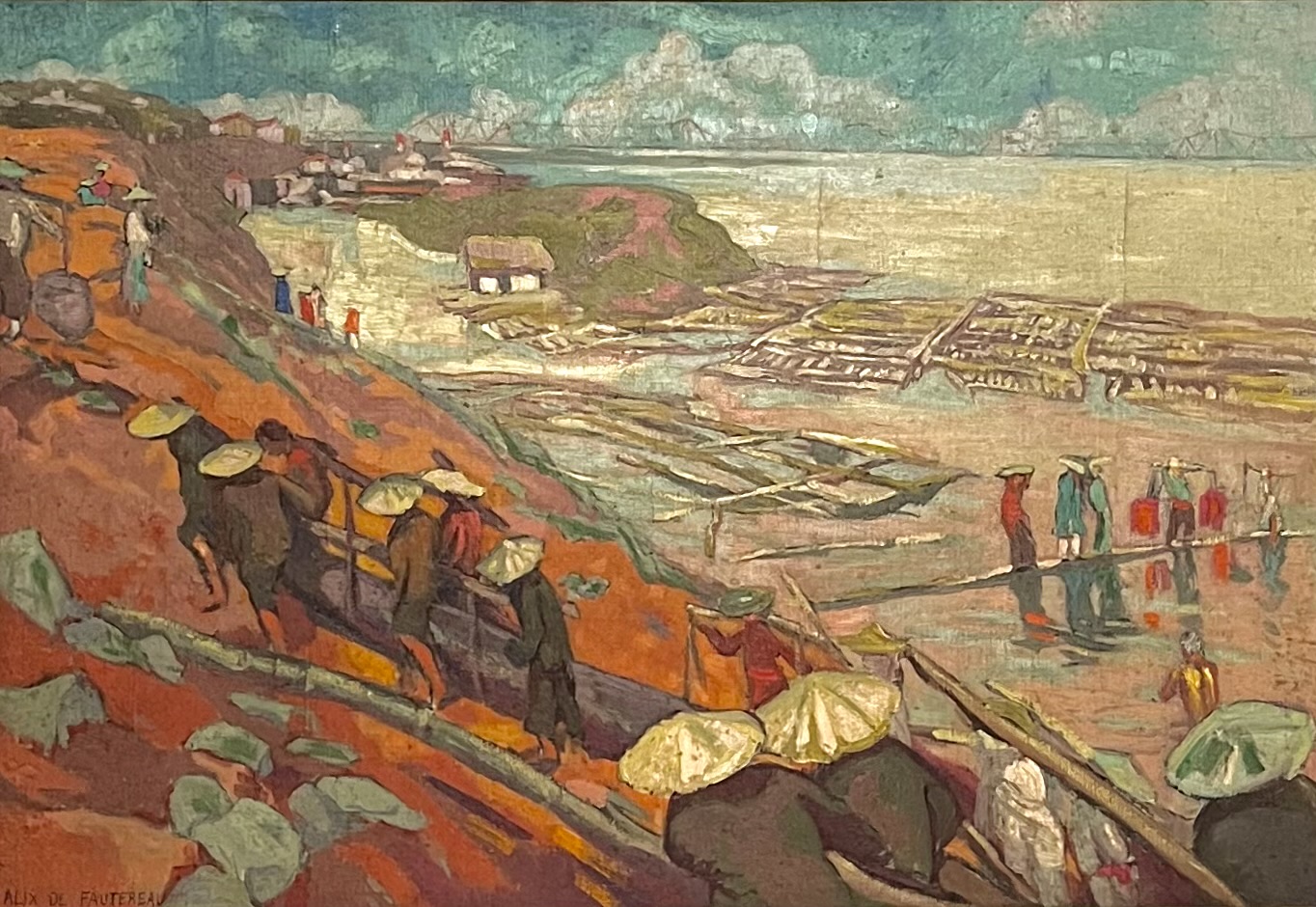
View of Bridge in Hanoi
c. 1930, Oil on canvas, 48 x 70 cm
Collection of Tan Shee Tiong
Bernard Buffet (b. 1928 – d. 1999)
Bernard Buffet was a French Expressionist painter, born in Paris in 1928. Exceptionally precocious, he was admitted to the École Nationale Supérieure des Beaux-Arts in 1943 at the age of 15. He held his first solo exhibition in Paris in 1947 and, a year later at just 20, received the Prix de la Critique. He died in 1999 in Tourtour, France, by suicide following a long struggle with Parkinson’s disease. He was 71.
Buffet is best known for his representational style, with works that are often figurative, centrally composed, and graphically rendered. Over time, he developed a distinctive visual language marked by elongated, angular forms, subdued colors, flattened space, and a pervasive atmosphere of isolation and despair. His subjects frequently explored themes such as art history, death, sexuality, popular culture, and politics, often referencing current events and fellow artists.
During his lifetime, Buffet gained widespread recognition, with numerous international exhibitions and honors, including his induction into the Académie des Beaux-Arts in 1974.
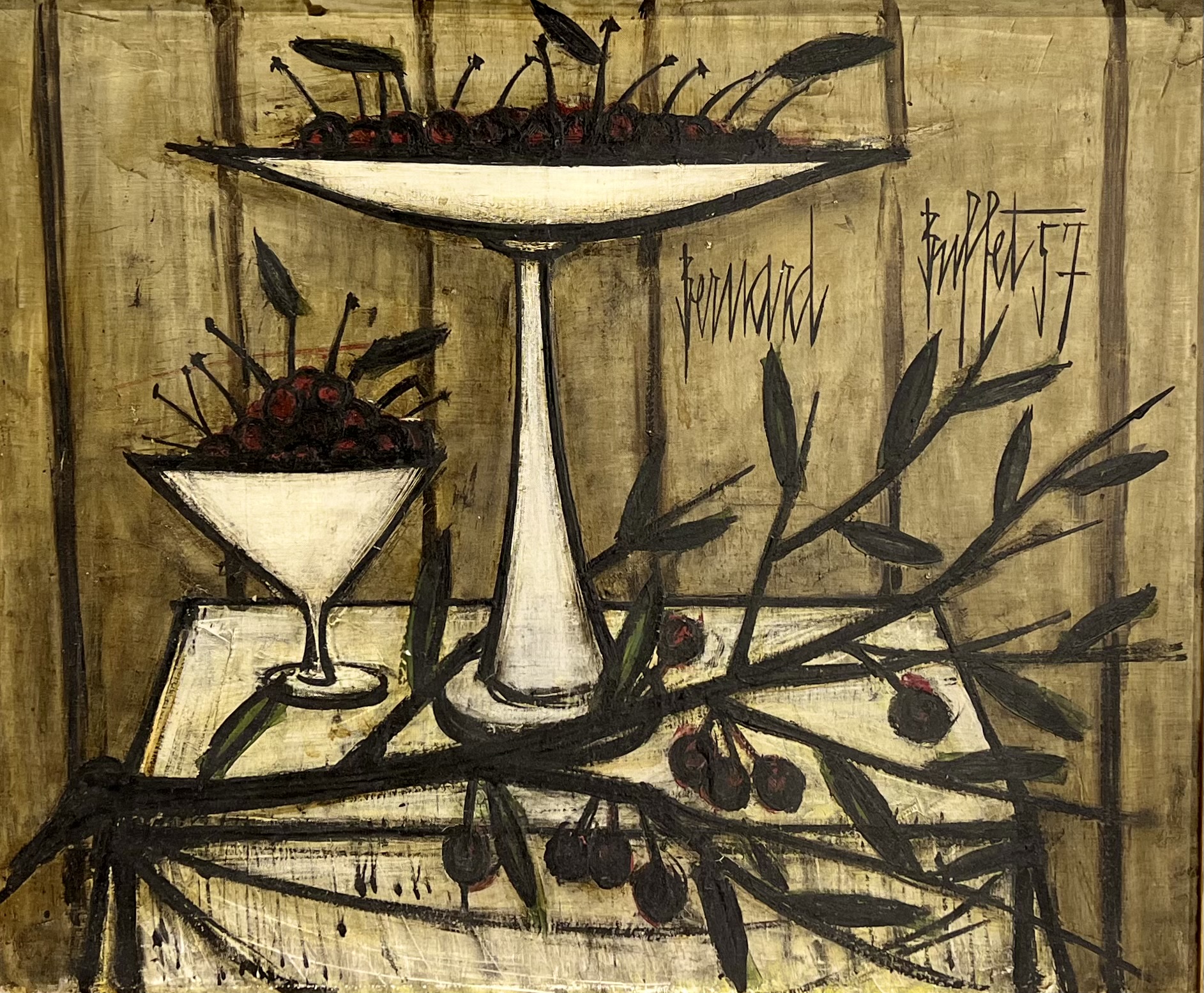
Cerises Dans un Compotier
1957, Oil on canvas, 53.5 x 64.9 cm
Private Collection
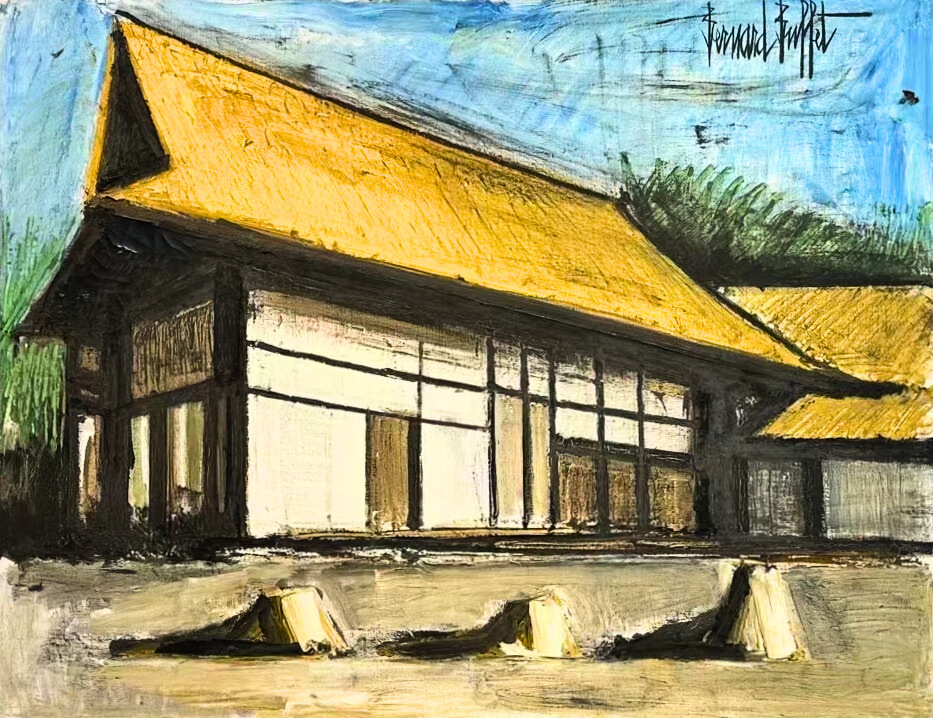
Temple Ryoan
c. 1980s, Oil on canvas, 114 x 146 cm
Private Collection
With stark black contours and subdued tones, Bernard Buffet transforms a simple bowl of cherries into a meditation on solitude and post-war melancholy. Created in 1957, this still life reflects his signature style—flattened space, angular forms, and emotional austerity.
A prodigious French artist trained at the École des Beaux-Arts, Buffet rose to fame in the 1940s as a defender of figurative art amidst the rise of abstraction. A founding member of L’homme Témoin, he produced over 8,000 works across painting and printmaking.
Buffet’s work resonated strongly in Japan, where a dedicated museum was established in his name in 1973. Today, his paintings are held in major institutions like MoMA and Tate, and his market remains robust—testament to a style that is both instantly recognizable and emotionally enduring.
In Temple Ryoan, Buffet depicts the quiet solemnity of Kyoto’s famed Zen temple. Bold, weighty lines reduce the architecture to a kind of structural poetry, suspending time and space within the frame — a painterly echo of Eastern minimalism. Buffet’s interpretation transcends representation; it becomes a spiritual portrait of place. Ryoan-ji, as rendered here, is not just a symbol of Zen — it is a vessel of solitude, discipline, and existential clarity, all recurring themes in Buffet’s postwar oeuvre.
In contrast, Cerises Dans un Compotier (Cherries in a Compote Dish) reveals his sculptural approach to still life. Olive branches and a glass stem intertwine at the center, evoking a silent dialogue of form and shadow—a classical elegance imbued with quiet restraint. The painting exemplifies Buffet’s signature expressionist style, where ordinary objects take on a brooding, austere intensity through his distinct lines and tonal control.
Chen Chunmu 陈春木 (b. 1981)
Born in Quanzhou in 1981, Chen Chunmu has been actively exhibiting since 2002. His work has been featured in group exhibitions internationally, including Gathering—Nine Artists’ Exhibition of Contemporary Art at Quac Art Space, Beijing (2007); The Big Bang at White Rabbit Gallery, Australia (2010); and The World Around—Exhibition of Ten at the Gehua Museum, Beijing (2010).
In 2013, he participated in The First China–ASEAN Biennale in Guangxi, and in 2014, his work was included in Fujianese Contemporary Art Exhibition at Soka Gakkai Malaysia, Art Expo Malaysia in Kuala Lumpur, New Horizons—Young Artist New Works at 798 Arts Center, Beijing, and A Life Without the Thrill of the Order at the Hong Kong Museum of Art. In 2015, he was featured in Meta Vision—Seven Unique Languages’ Personal History at Rainbow Wall Art Gallery, Beijing.
His recent solo exhibitions include Worms Revolution at Soobin Art International, Singapore (2011), Buried Oneself in the Earth and Waiting for Growing Up at Hongkun Museum of Fine Art, Beijing, and Make an Honest Flower at Ying Gallery, Beijing (both in 2015).
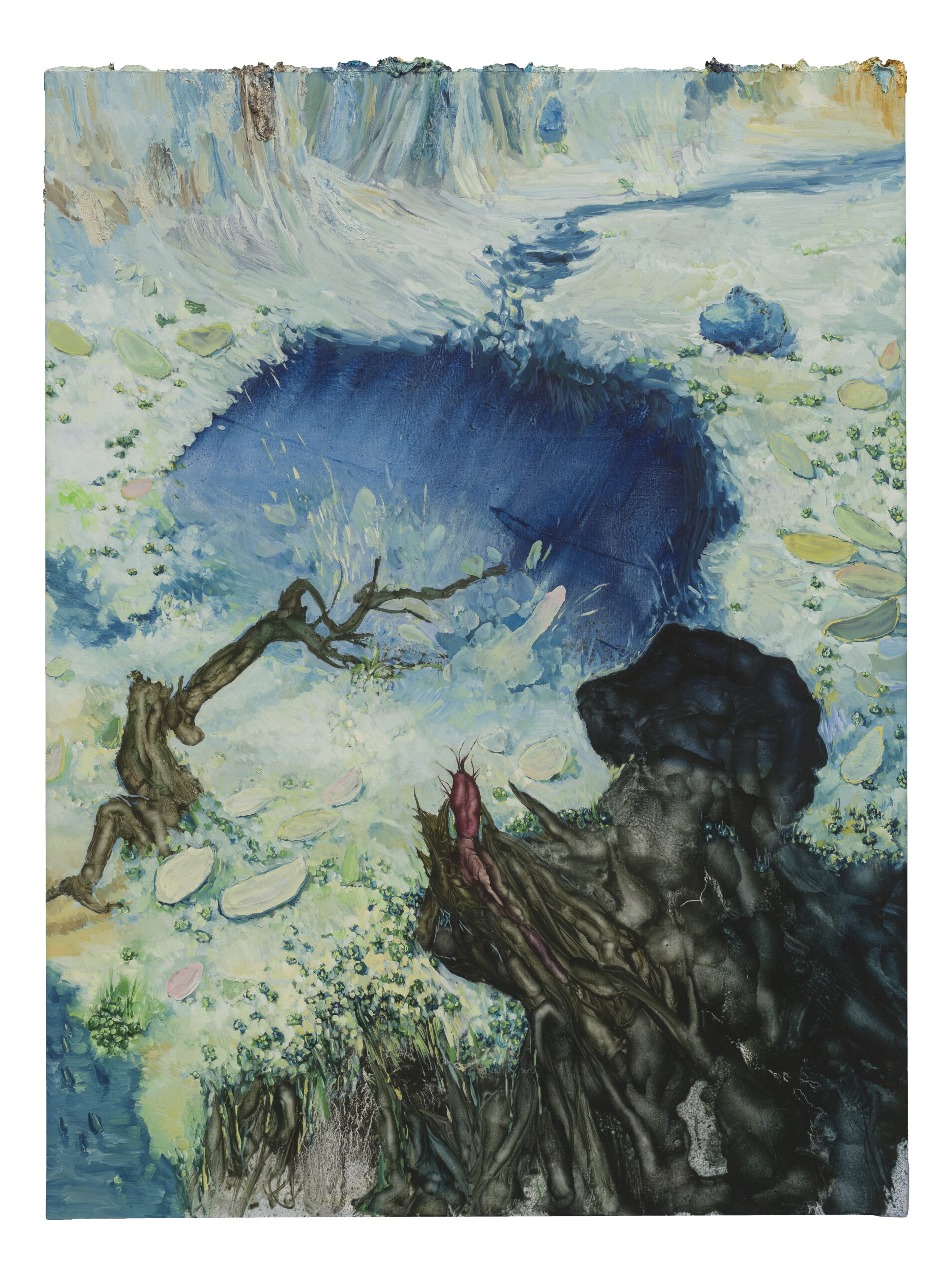
Atop the Southern Hills
2018, Oil on canvas, 203 x 150 cm
Gallery Collection

Seeds
2025, Oil on canvas, 35 x 33 cm
Gallery Collection
Chu Teh-Chun 朱德群 (b. 1920 – d. 2014)
Chu Teh-Chun was a pioneering French-Chinese painter celebrated for merging traditional Chinese aesthetics with Western abstraction. Alongside close friends and classmates Wu Guanzhong and Zao Wou-Ki—collectively referred to as the “Three Musketeers” of Chinese modernist art—Chu played a pivotal role in shaping the trajectory of 20th-century Chinese painting. In recognition of his artistic achievements, he was elected to the Académie des Beaux-Arts in France.
Born in Hangzhou, China, Chu studied at the National School of Arts, where he was immersed in both Chinese and Western artistic traditions. He later taught Western painting at the National Taiwan Normal University before relocating to Paris in the mid-1950s, eventually becoming a French citizen in 1980. Shortly after his arrival, he gained early acclaim when awarded the silver medal at the 1956 Salon de Printemps for a portrait of his wife—affectionately dubbed the “Mona Lisa of the East” by Wu Guanzhong.
Abandoning figuration, Chu developed a lyrical abstract style marked by gestural brushwork, vibrant color fields, and calligraphic energy—evoking landscapes of memory and traditional ink painting, while also engaging with the abstract movements of his time in Europe and the United States. His international breakthrough came with a 1964 exhibition at the Carnegie Museum of Art, establishing him as a global figure in contemporary art.
Chu’s work is held in over 50 major museum collections worldwide, and his market has ranked among the highest for Chinese artists. Notable auction records include No. 268 ($9.7 million, 2018) and an untitled 1963 painting ($9.1 million, 2013). He passed away in 2014 at the age of 93, within a year of the deaths of both Wu Guanzhong and Zao Wou-Ki, marking the end of an era in Chinese modernist painting.
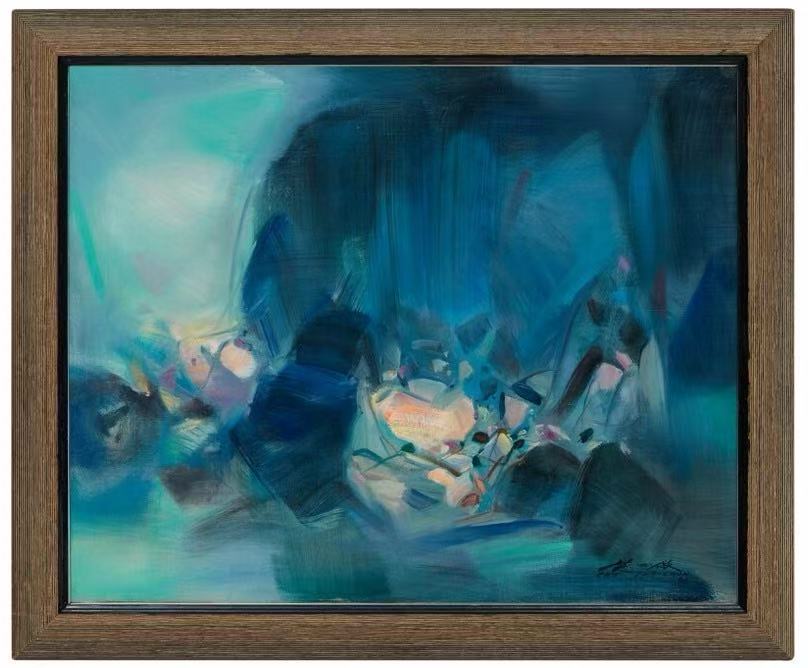
Doux Avenir
1996, Oil on canvas, 65.0 x 80.0 cm
Collection of Nai Family
Painted in 1996, Doux avenir (translated as “Gentle Outlook”) radiates an intense blue light across a vast, cosmic darkness—shattering the void and transforming it into a luminous expanse. The dynamic brushwork and interwoven hues evoke the atmospheric grandeur of J.M.W. Turner’s masterworks, where light becomes both subject and substance. In this painting, Chu conjures a spiritual realm through gradations of blue, from deep to translucent, resembling sea and sky. Contrasting accents of reddish-brown and yellow punctuate the canvas, creating rhythmic visual tension and alluding to life quietly emerging from a blue-hued universe.
This work once belonged to Maryn Varbanov and Song Huai Gui, longtime friends of Chu Teh-Chun and influential figures in Chinese contemporary art. Varbanov, a French artist of Bulgarian origin, studied in China where he met and married Song—with special approval from Premier Zhou Enlai, theirs was the first foreign-Chinese marriage recognized in the early days of the PRC. The couple later settled in Paris and remained deeply engaged in Sino-French cultural exchange. As a professor at the China Academy of Art, Varbanov pioneered the modern Chinese tapestry movement, establishing a forward-looking research institute and promoting interdisciplinary practices with international impact.
Song Huai Gui was equally remarkable—a pioneering female artist, tastemaker, and entrepreneur. She was the first Chinese representative for French fashion house Pierre Cardin, bringing modern fashion into China, and also served as general manager of Maxim’s restaurant, a joint venture that became both a cultural landmark and haven for China’s rock scene.
Their legacy as collectors and cultural ambassadors is embodied in this painting, which stands not only as a testament to Chu Teh-Chun’s lyrical abstraction but also to a meaningful era of artistic friendship and exchange.
This work is now in the collection of the Nai Family, and is generously on loan for this exhibition.
Chua Ek Kay 蔡逸溪 (b. 1947 – d. 2008)
A prominent figure in Singaporean art, Chua Ek Kay was known for his distinctive Chinese ink practice that bridged tradition and modernity. From 1975 to 1985, he trained under renowned ink master Fan Chang Tien. In addition to his artistic practice, Chua was active as an art lecturer, curator, committee member, and published poet.
Chua received numerous accolades, including the Grand Prize at UOB’s 10th Painting of the Year Award, the Juror’s Choice at the 1998 Philip Morris ASEAN Art Awards, and the Cultural Medallion from Singapore’s National Arts Council in 1999.
He began exhibiting with a solo presentation at the Chinese Chamber of Commerce, Singapore (1988), followed by major shows such as Being and Becoming at STPI (2003), Yixi: Recent Paintings of Chua Ek Kay at the Shanghai Art Museum (2005), Chua Ek Kay @ Art Forum (2006), and Lotus Pond & Water Village at Cape of Good Hope Art Gallery (2007).
His work has continued to be celebrated posthumously in exhibitions such as Re-visiting Chua Ek Kay: Tribute to the Ink Master (STPI, 2010), Old Campus Revisited at The Private Museum (2012), and Chua Ek Kay: After the Rain at National Gallery Singapore (2015).
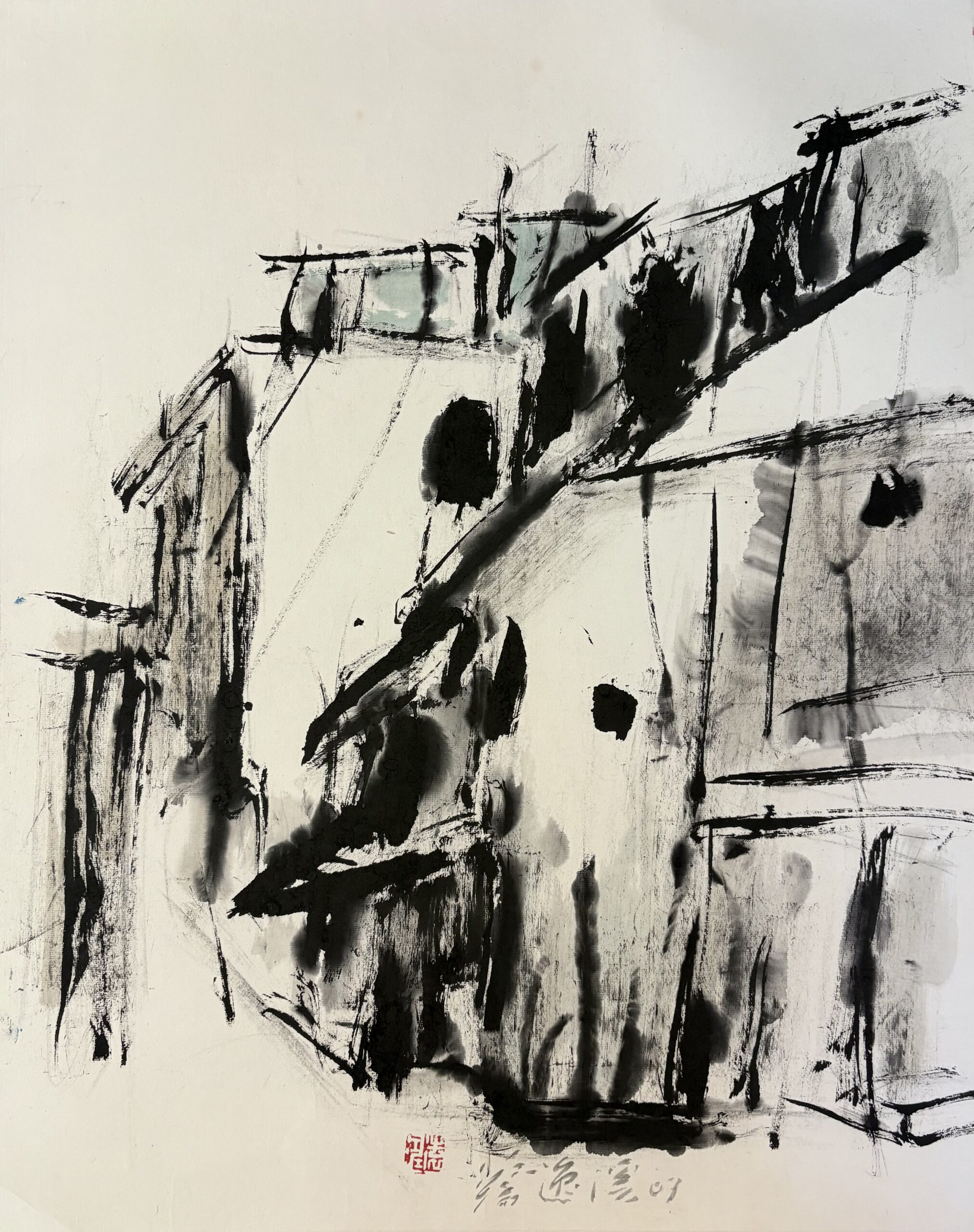
Singapore Streetscape
2007, Ink and colour on paper, 64 x 58 cm
Gallery Collection
Chua Soo Bin 蔡斯民 (b. 1932)
Singaporean photographer Chua Soo Bin led a diverse career throughout his lifetime, excelling as a renowned photographic master, artistic director, art dealer, and art patron. These varied roles seamlessly intertwined due to his deep-rooted connection to the arts. In his early twenties, he was an active member of the Singapore Photographic Society and obtained the Associate Distinction from the Royal Photographic Society of Great Britain in 1955. His work Harvesting the Beach was featured in the annual publication Photograms of the Year, showcasing the best photographic works from around the world. From the 1960s to the 1980s, Chua Soo Bin found success as an advertising photographer, producing creative campaigns for clients such as Singapore Airlines, earning recognition for his innovative concepts and imagery. Starting from the mid-1980s, he embarked on ambitious personal projects, notably gaining fame for his portraits of artists. His contributions to the arts led to him being awarded the Cultural Medallion by the Singaporean government in 1988.
Chua Soo Bin’s portrait of Wu Guanzhong has been exhibited at the former Parliament House Art Gallery (Singapore, 2017), Tsinghua University Art Museum (China, 2020), and is now part of the collections of the National Gallery Singapore, Tsinghua University, the Hong Kong Museum of Art, and private collectors.
In the 1990s, Chua Soo Bin photographed the lives of 14 Chinese painting masters, including Zhu Qizhan, Liu Haisu, Huang Junbi, Zhao Shao’ang, Chen Wenxi, Wang Jiqian, Li Keran, Ye Qianyu, Wu Zuoren, Lu Yanshao, Xie Zhiliu, Li Xiongcai, Tang Yun, and Guan Shanyue. Using his unique perspective, he documented the elegance and demeanour of these contemporary Chinese painting masters, leaving an important visual record in the history of Chinese art. These photographs have become precious historical image documents.
In addition to his work in photography and curating, Chua Soo Bin is a person who deeply loves life. His works are imbued with a passion for life and a pursuit of beauty. His attitude towards life and his work ethic have set a benchmark for art enthusiasts in Singapore and around the globe. His achievements and contributions extend beyond the realm of photographic art; they have had an indelible impact on the dissemination and promotion of culture and art.
Artist Liao Fangyan once remarked that Chua Soo Bin’s life and art are inseparable. Whether it is his family, photography, gallery affairs, or collections, they are all integrated. “Soo Bin is art!”

Wu Guanzhong: Infnite Dots and Lines (1)
2024, Archival inkjet print on paper, 33 x 49 cm, Edition 1/12
Gallery Collection

Wu Guanzhong: Infnite Dots and Lines (7)
2024, Archival inkjet print on paper, 33 x 49 cm, Edition 1/12
Gallery Collection
This iconic portrait marks the first meeting between two luminaries of Asian art — Wu Guanzhong, the pioneering Chinese painter, and Chua Soo Bin, the visionary Singaporean photographer. Captured in Singapore in 1988, the image uses long-exposure light painting to echo Wu’s philosophy that “lines are the lifeblood of painting.” Light swirls around Wu’s figure like brushstrokes suspended in mid-air, capturing the spirit of his work in a single frame.
After being held in private for over 30 years, this photograph was officially re-released in January 2024 as a limited edition of 12 sets, each containing 8 prints. It has since entered the collections of major museums and private collectors, reaffirming its place in the history of modern Asian portraiture — and in the story of a friendship between two masters of their craft.
Cheong Soo Pieng 钟泗滨 (b. 1917 – d. 1983)
Widely regarded as one of Singapore’s most accomplished and prolific painters, Cheong Soo Pieng’s career spanned over four decades and encompassed a diverse range of media. As a dedicated educator at the Nanyang Academy of Fine Arts, he mentored a generation of artists working in Western media and helped establish Singapore’s presence in the global art scene.
During the 1950s and 60s, Cheong produced empathetic and introspective works depicting the people, landscapes, and cultures of Singapore and Southeast Asia. His seminal 1952 trip to Bali, alongside fellow pioneers, crystallized the ‘Nanyang style’—Singapore’s first distinct painting movement—characterized by a synthesis of Eastern and Western artistic traditions.
A subsequent visit to Europe in 1962–63 prompted Cheong to explore ink aesthetics and rethink his engagement with ethnicity. Upon returning, he entered a period of stylistic innovation, experimenting with oils, inks, batik, collage, cloisonné, metalwork, and found materials. This phase reflected Singapore’s rapid industrialization, with works that navigated between organic and geometric forms, and moved toward abstraction.
In the late 1970s, Cheong revisited Southeast Asian subjects, notably from Malaya, Sarawak, and Bali, depicting stylized figures with elongated limbs and almond-shaped eyes—a signature series influenced by wayang kulit puppetry and modernist artists like Modigliani and Giacometti. His oil paintings incorporated frames within frames, highlighting multiple perspectives on Southeast Asian identity, while his ink scrolls localized Chinese ink traditions through indigenous cultural references.
Cheong’s sudden death in 1983 cut short a vibrant and evolving practice. Today, he is internationally recognized as a foundational figure in Singaporean art, celebrated for successfully blending diverse artistic traditions. His ink painting Drying Salted Fish is famously featured on the back of Singapore’s $50 banknote.
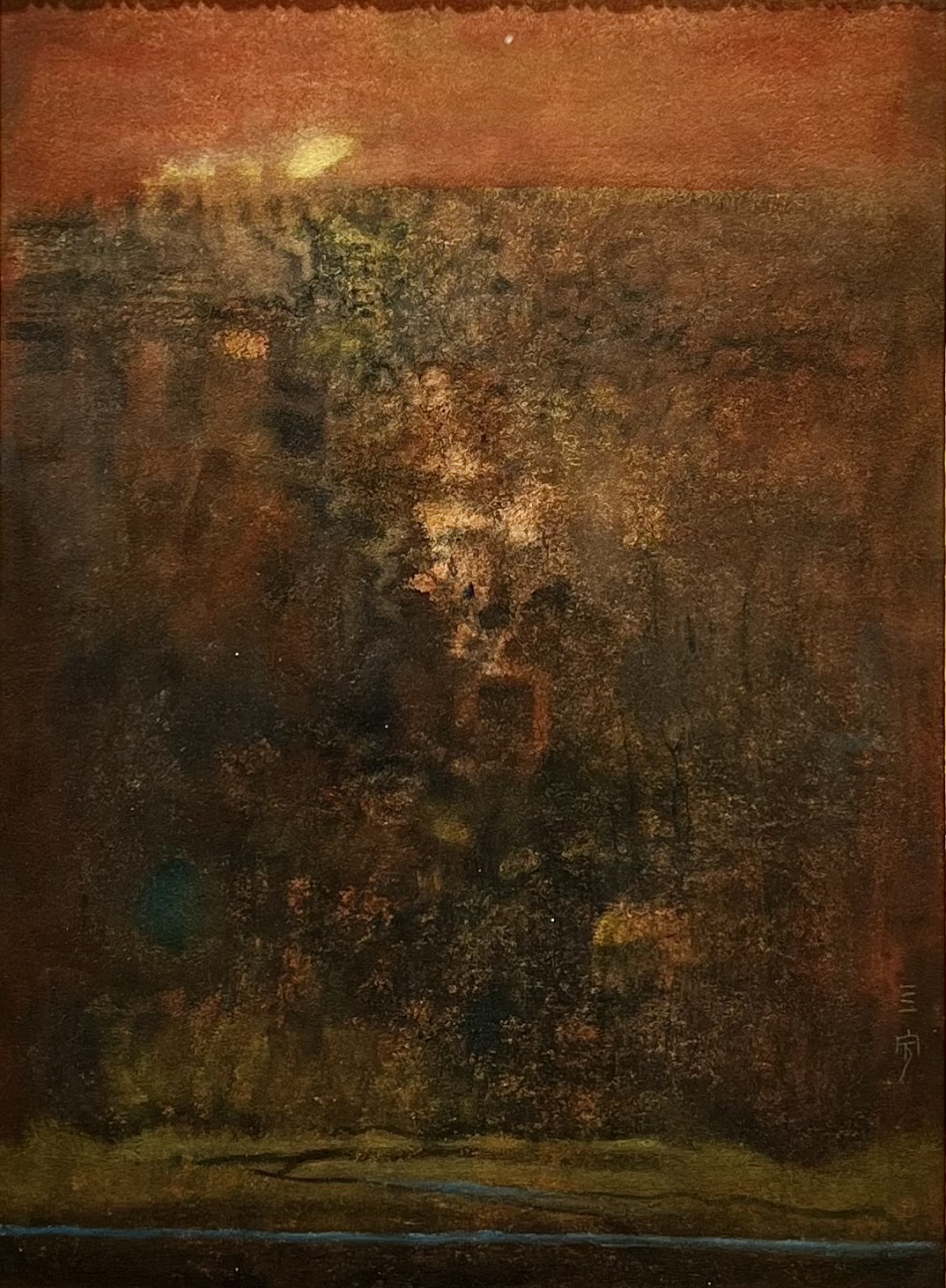
Red Nebula
c. 1970, Mix media on canvas, 70 x 50 cm
Private Collection
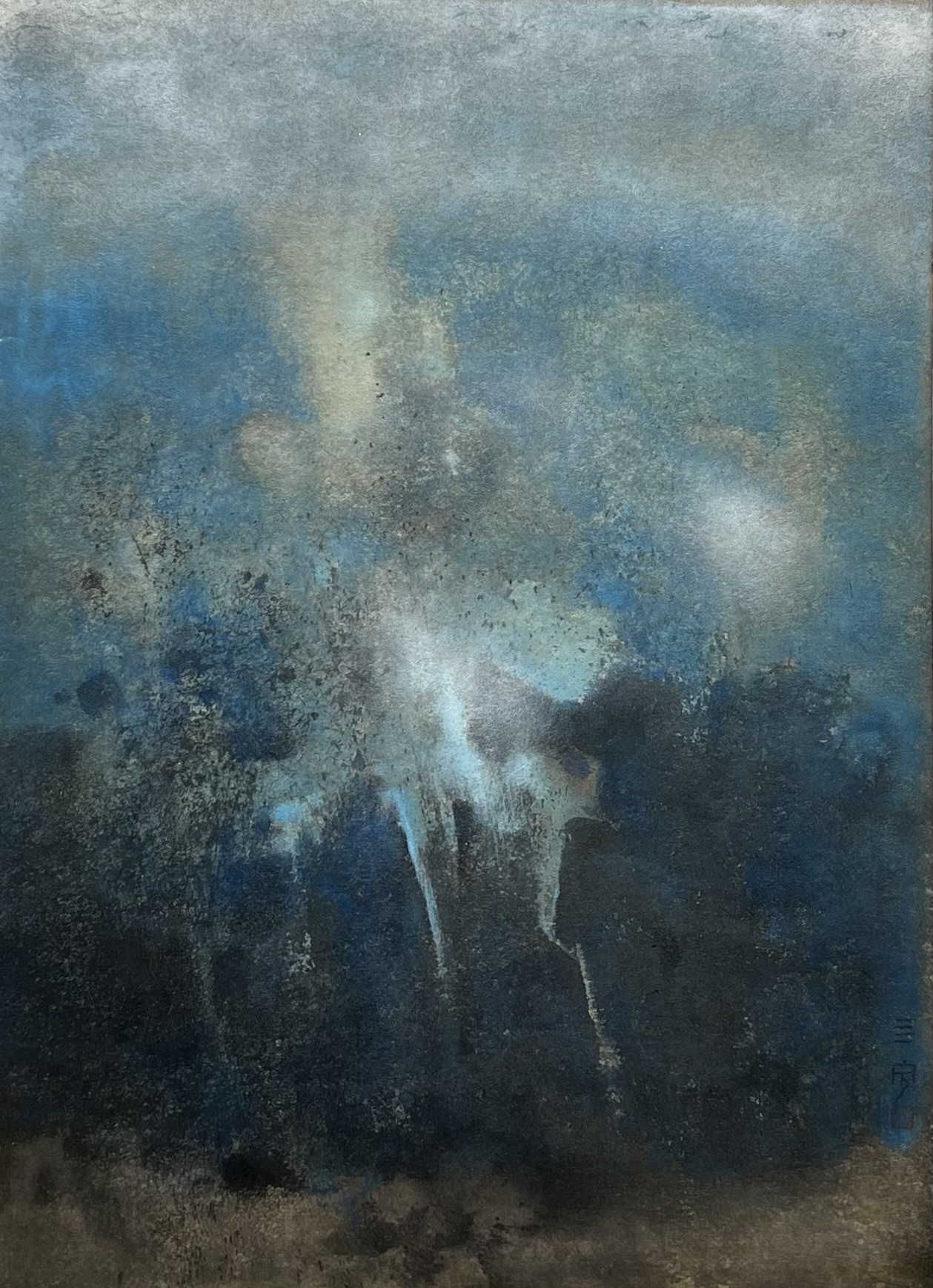
Milky Way
c. 1970, Mix media on canvas, 70 x 50 cm
Private Collection
Both Red Nebula and Milky Way were created in 1970s. The mixed-media works evokes cosmic energy and introspection. Through tonal washes and textural layering, Cheong crafts a contemplative passage between form and void—characteristic of his mature abstract style.
Together, these two works showcase Cheong’s mastery at blending Eastern sensibility with Western compositional rigor, reflecting his innovative spirit and sustained commitment to transcultural experimentation.
Fang Wei 方巍 (b. 1968)
Born and based in Shanghai, Fang Wei studied at the Shanghai Arts & Crafts Institute and is known for his dreamlike, vividly colored paintings. Rather than drawing from fixed themes, Fang’s work emerges from his imagination, exploring the full spectrum of human emotions—including excitement, fear, loneliness, ecstasy, and alienation.
His large-scale compositions feature multiple human forms that merge into saturated, surreal landscapes. Though seemingly chaotic, these forms are carefully constructed, reflecting Fang’s skill in using vibrant colors and surrealist techniques to convey a primitive mysticism and psychedelic energy that captivates viewers.
Fang believes subjective interior truths often surpass objective reality. His work explores the evolving relationship between people and their environment, a process also embodied in his sculptures, which act as physical markers of transformation and becoming.
Through his unique visual language, Fang captures life’s rhythms with intense, hallucinatory imagery. His paintings pulse with nervous energy, balancing light and dark, reality and illusion, life and death—echoing Gilles Deleuze’s words on the transcendent intensity found in life’s contradictions.
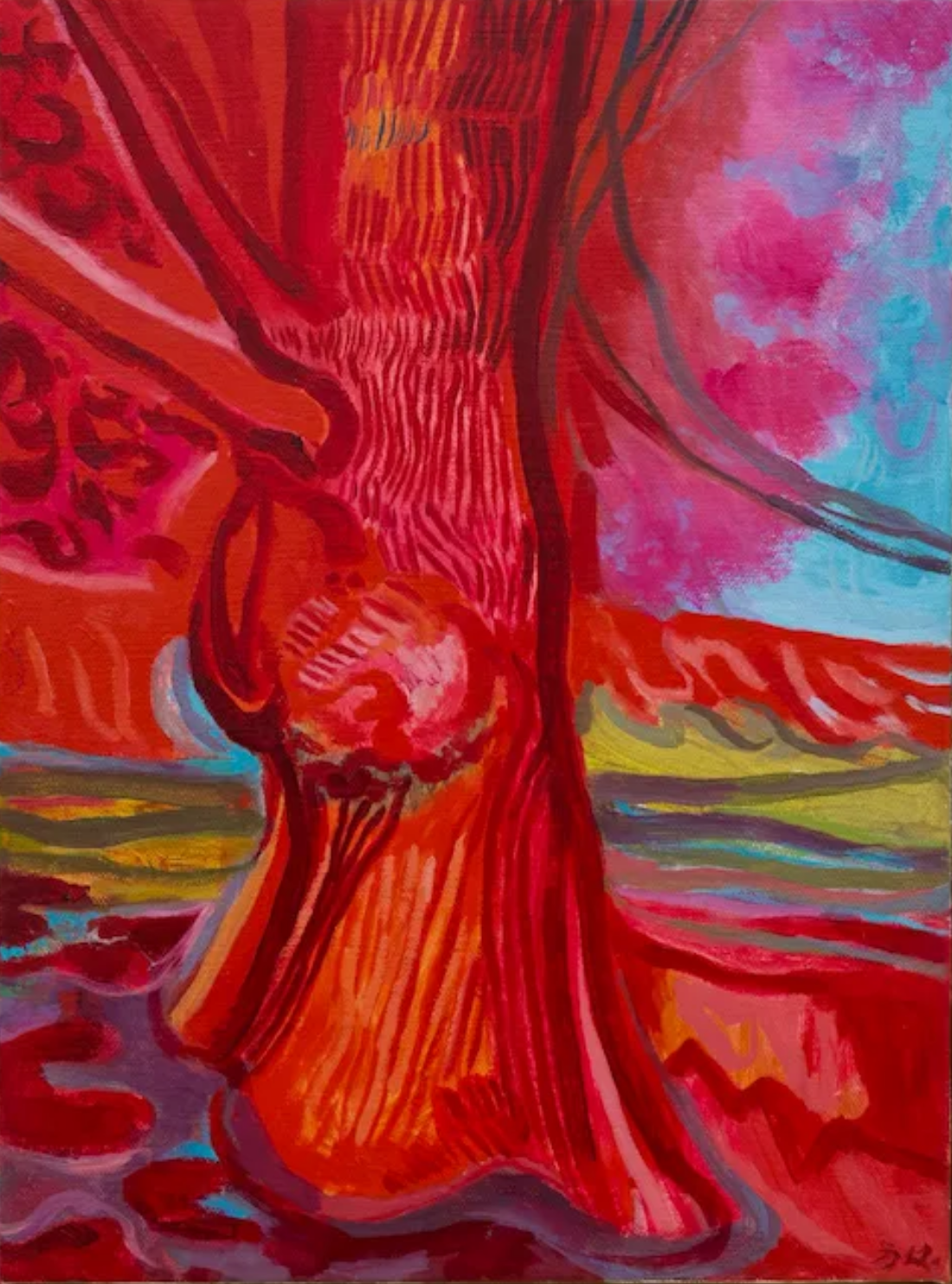
Fiery Foliage
2021, Oil on canvas, 54.0 x 40.0 cm
Gallery Collection
Georgette Chen 张荔英 (b. 1906 – d. 1993)
Georgette Chen was a pioneering figure in Singapore’s modern art movement and a key proponent of the Nanyang style. Known for her vibrant still lifes, portraits, and local landscapes, Chen seamlessly fused Western oil painting techniques with Southeast Asian subject matter. In 1982, she was awarded the Cultural Medallion in recognition of her lasting contributions to Singapore’s visual arts.
Chen studied at the Art Students League of New York and later at the Académie Colarossi and Académie Biloul in Paris, developing a style influenced by Realism and Post-Impressionism. After early exhibitions in Paris—including at the Salon d’Automne—she spent time in Shanghai during the 1940s before settling in Singapore in 1953. There, she exhibited widely and taught part-time at the Nanyang Academy of Fine Arts from 1954 to 1980.
Through her unique blend of formal training and sensitivity to local subjects, Chen helped define the Nanyang style—a synthesis of Eastern themes and Western techniques. Her works such as Mosque in Kuala Lumpur (1957) and Singapore Waterfront (1958) reflect this cross-cultural approach.
Chen passed away in 1993, but her legacy endures through major exhibitions, publications, and creative works inspired by her life. Her contributions remain foundational to the story of modern art in Singapore.

Portrait of Madam Tan Hong Siang
1965, Pastel on paper, 47.0 x 32.0 cm
Collection of Nai Family
Madam Tan Hong Siang (1914-2008), commonly known as Cyril Wong in certain circles, was a physiotherapy student studying anatomy in the Anatomy Dissection Hall of King Edward VII College of Medicine in Singapore, now part of the National University of Singapore (NUS), when she met her future husband, Dr Wong Kin Yip (1914-1994), who was admitted to the King Edward VII College of Medicine in 1934 on a scholarship. They got married in 1941 and two sons were born during the war.
In 1940 when Dr Wong graduated from King Edward VII College, he was awarded the Queen’s Fellowship for being the most outstanding graduate in Singapore and Malaya. This Fellowship is as prestigious as Singapore’s President’s Scholarship of today. In 1950, he made use of his scholarship to specialise in Ophthalmology at University College London. Madam Tan joined her husband in London and decided to do a law degree there. After returning to Singapore, she was called to the bar in 1953 and became a practising lawyer. Madam Tan was also a Deputy Chairman of Singapore Telecoms Board.
Interestingly, one of Madam Tan’s sons was a student of Georgette and they all became family friends. She also befriended Dr Mah Kee Loon, a known patron of Georgette.
Heather Dewey-Hagborg (b. 1982)
Dr. Heather Dewey-Hagborg is a New York-based artist and biohacker whose practice centers on art as research and critical engagement with emerging technologies. Her work often addresses biopolitics and genetics, as seen in her widely discussed project Stranger Visions, in which she created sculptural portraits from DNA extracted from found objects like hair, gum, and cigarette butts collected in public spaces.
Her work has been exhibited internationally at institutions and events such as the World Economic Forum, the Daejeon Biennale, Guangzhou Triennial, Shenzhen Urbanism and Architecture Biennale, Transmediale, Walker Art Center, Philadelphia Museum of Art, and MoMA PS1. Her pieces are included in major public collections, including the Centre Pompidou, the Victoria and Albert Museum, and SFMoMA. Her practice has received significant media coverage, from The New York Times and BBC to Artforum and Wired.
Dewey-Hagborg holds a PhD in Electronic Arts from Rensselaer Polytechnic Institute. She is currently an Artist-in-Residence at the Exploratorium and an affiliate of Data & Society. She also serves as a founding board member of Digital DNA, a European Research Council-funded initiative exploring the evolving relationship between digital technology, DNA, and evidence.

Stranger Visions
2012-2013, Found genetic materials, custom software, 3D prints, documentation, 20.3 x 15.24 x 15.24 cm each
Private Collection
Ho Kah Leong 何家良 (b. 1937)
Dr. Ho Kah Leong is a respected figure in Singapore’s cultural landscape, known for his contributions to both public service and the visual arts. A graduate of Chung Cheng High School and Nanyang University, Dr. Ho began his career in education before entering politics. Elected to Parliament in 1966, he served as a Member of Parliament for three decades, rising to the role of Senior Parliamentary Secretary in 1984. Throughout his political career, Dr. Ho remained deeply committed to the arts, a passion that began in his school days.
In 1997, following his retirement from politics, Dr. Ho was appointed Principal of the Nanyang Academy of Fine Arts (NAFA), where he oversaw the development of new campuses along Bencoolen Street and spearheaded fundraising efforts. As an artist, he is known for his bold and expressive style across multiple mediums, including oil painting, Chinese calligraphy, and woodcut printmaking—a form he helped revitalize in Singapore from the 1950s to 1970s.
Dr. Ho frequently participated in charitable exhibitions and donated works to support various causes. His solo shows include Nostalgic Scenes (1990), Beauty Lion City (1991), and Scenes Splendour (1993) at NAFA Gallery. Later exhibitions such as Passion for Art (SooBin Gallery, 1997), Idyllic Nanyang (2000), and Idyllic Tropics (Kuala Lumpur, 2001) further cemented his position in the art community. Notable presentations in the 2000s include Beauty of Nature (NAFA Gallery, 2002), Parks in Garden City (ARTium, 2006), Last Kampung of Singapore: Lorong Buangkok (2007), and Poetic Ubin (2008). His later exhibitions include Splendour of Lakes and Hills (2009), Rhythm of the Sea (2011), Lion City Rediscovered (2013, 2015), Exotic Landscapes (2015), and Trilogy: Art of Ho Kah Leong (The Art Space by Natalie Wong, 2024).
Dr. Ho’s contributions have been recognized with several honors, including the NTUC Friend of Labour Medal (1981), the Peru Cultural Medal (2000), and an Honorary Doctorate in Arts from Wisconsin International University (2001). His lifelong dedication to public service and the arts continues to serve as an inspiration to generations of Singaporeans.
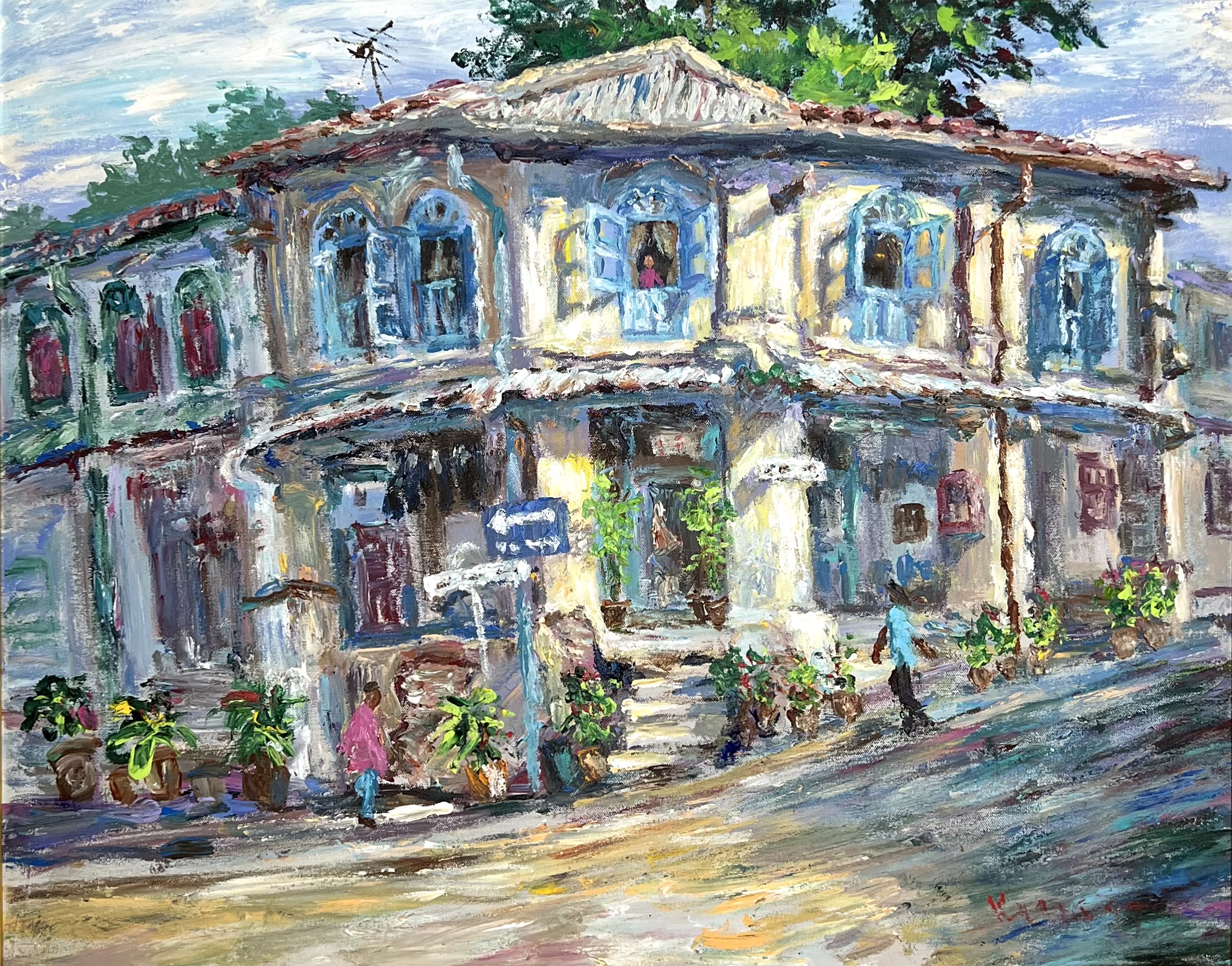
Ann Siang Hill
Created prior to 1997, Oil on canvas, 60 x 75 cm
Collection of Tan Shee Tiong
Han Sai Por 韩少芙 (b. 1943)
Han Sai Por is a pioneering Singaporean sculptor renowned for her mastery of stone, transforming granite and marble into organic, emotive forms. Her works are exhibited internationally across Southeast Asia, China, South Korea, North America, and Europe, with many permanently installed in public spaces in Singapore and abroad—including the United Kingdom, United States, Japan, and Malaysia. In recognition of her contributions to the arts, Han was awarded Singapore’s Cultural Medallion in 1995.
Born during the Japanese Occupation and raised in modest circumstances in Changi, Han developed a love for nature and creativity from a young age. After graduating from the Teachers’ Training College in 1968, she taught full-time while pursuing part-time studies at Nanyang Academy of Fine Arts. In 1979, she furthered her education in the United Kingdom, earning a BA (Hons) in Fine Art from Wolverhampton College of Art. To support herself, she worked various jobs including as a waitress and cook.
Returning to Singapore in 1983, Han helped launch the Art Elective Programme at Nanyang Girls’ High School, later lecturing part-time at NAFA, LASALLE, and the National Institute of Education. In 1996, she became a full-time professional sculptor and in 2001, she founded the Sculpture Society (Singapore), serving as its first president.
Han is best known for her stone sculptures—bold, yet fluid in form—reflecting a deep engagement with nature and the human condition. Despite the physical demands and high cost of materials, Han has remained committed to her practice, funding many of her projects independently. Her works, such as those displayed at Esplanade, Suntec City, Capital Towers, and Woodlands Regional Library, are celebrated for their poetic contrast between material weight and visual softness.
Her solo exhibitions include Four Dimensions (1993), Rain Forest (1999), 20 Tonnes (2002), Oasis (2006), The Changing Landscape (2009), The Black Forest (2011), and Moving Forest (2014). Han has received numerous awards, including the Outstanding City Sculpture Award (China, 2006) and induction into the Singapore Women’s Hall of Fame (2014).
As she once said: “A sculpture is not a cold piece of stone, clay or metal. It has a life of its own.”
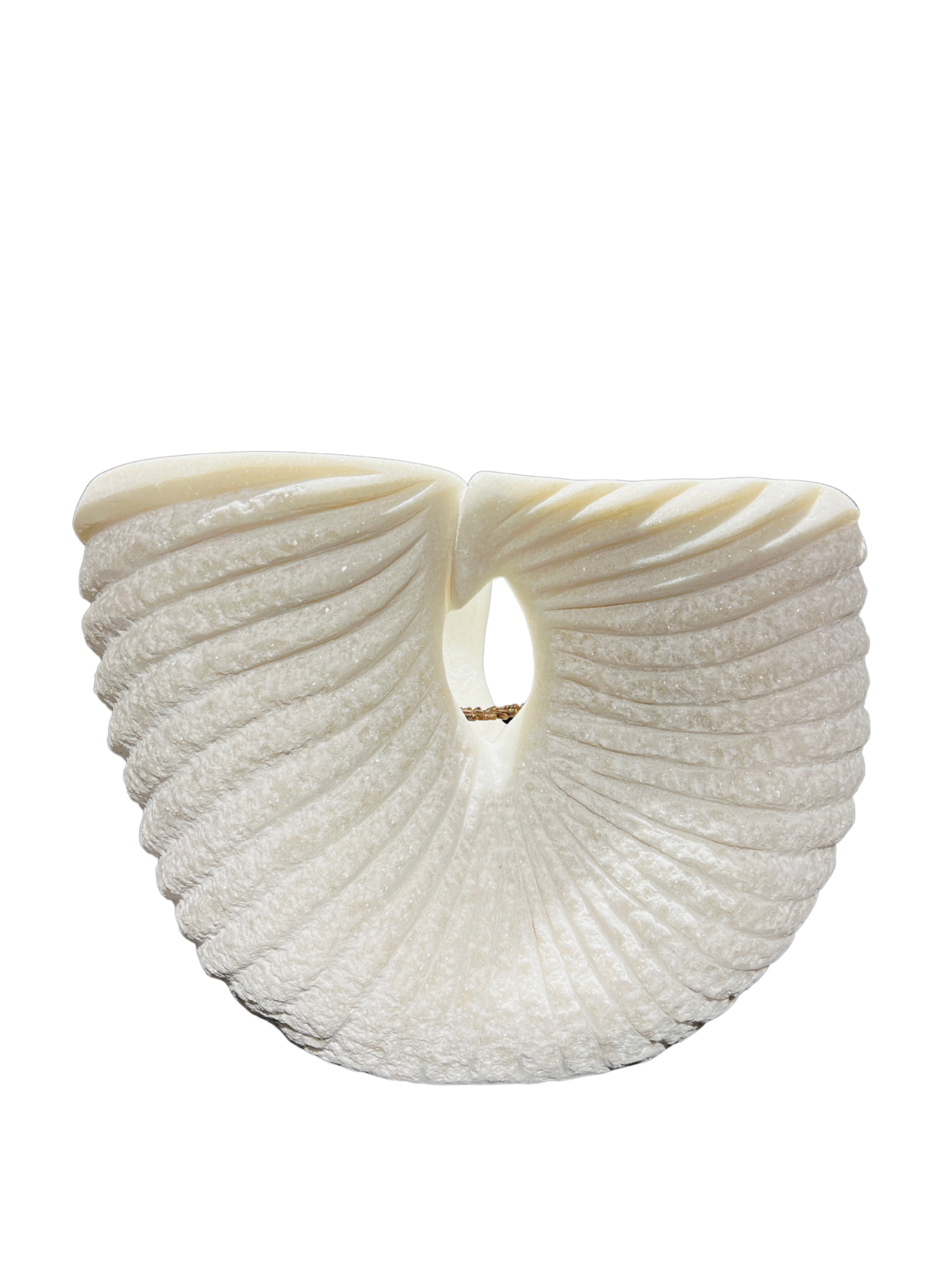
Nest
2023, Crystal white marble, 45 x 35 x 40 cm
Private Collection
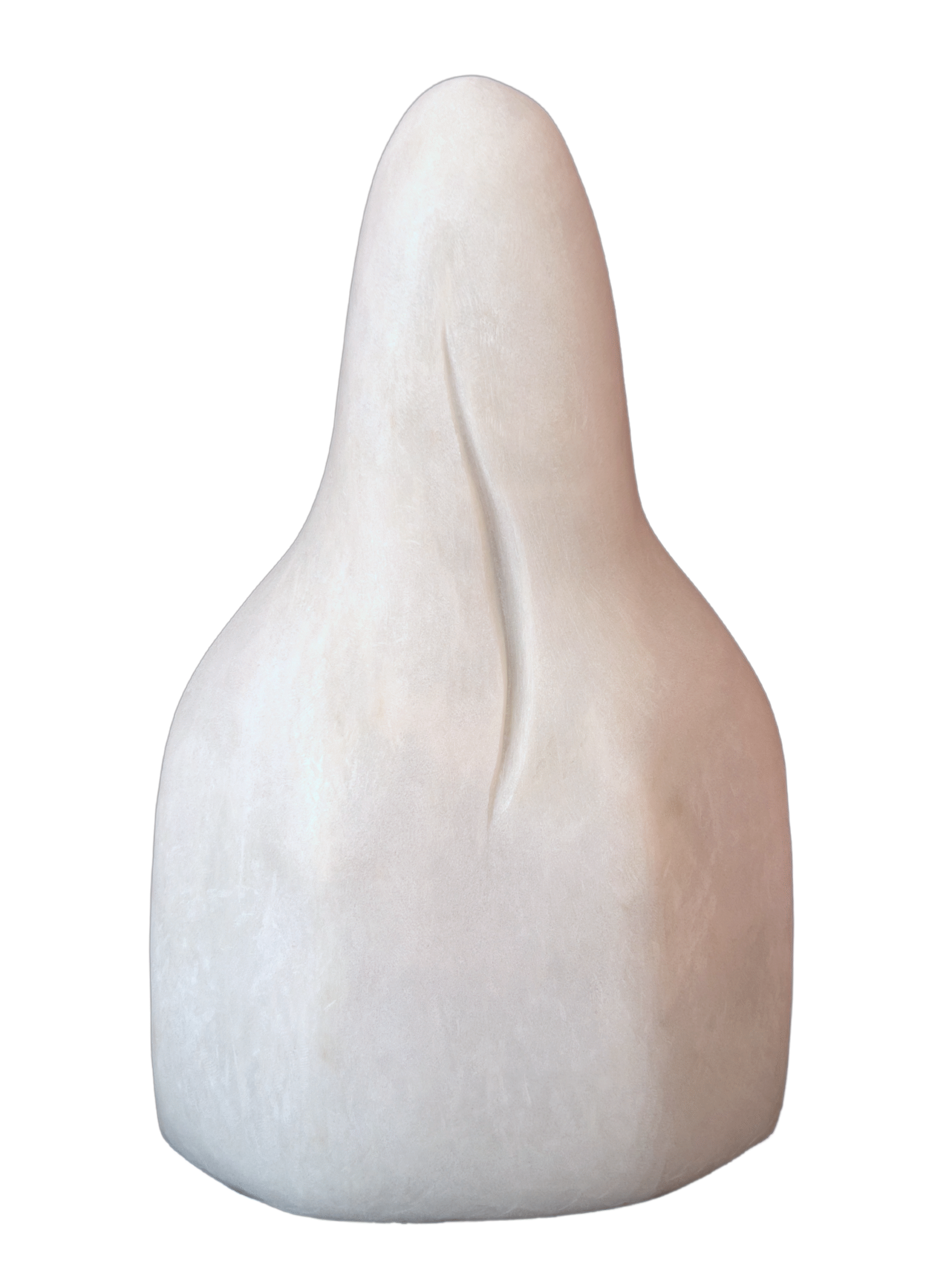
Meditation
1986-2025, Marble, 20 x 40 x 60 cm
Gallery Collection
Sculpture Nest unfolds like a shell, seed, or womb — its undulating ridges cradle a quiet void at the center. Carved from crystal white marble, the form radiates both symmetry and movement, suggesting growth, protection, and gestation. The slit that pierces the sculpture’s heart becomes a breath, an invitation to enter an interior space where silence resounds. By contrast, Meditation embodies stillness. With its smooth, rounded contours and enigmatic slit running vertically through its form, the sculpture evokes a meditating figure, a stone relic, or a sacred monument. It invites contemplation—on time, being, and the fragile strength of the body.
Using granite and marble, she crafts spatial poems that merge nature and culture: You can encounter Han’s public art at the Esplanade, the National Museum, Changi Airport, Revenue House, and other locations. Her sculptures also reach far beyond Singapore, installed in Japan, Malaysia, the United States, and the United Kingdom.
In 2025, five of Han’s sculptures were acquired by the Centre Pompidou in France. As a symbol of modern and contemporary art, this collection not only represents international recognition of her stone carving, but also places her firmly within the global discourse of contemporary sculpture.
Lee Wen 李文 (b. 1957 – d. 2019)
Lee Wen was a pioneering Singaporean multidisciplinary artist widely recognised for his significant contributions to performance art in Asia. Best known for his iconic Yellow Man series, Lee explored themes of identity, ethnicity, and social commentary through metaphor, poetry, installation, and time-based practices. His work was featured in over 30 international festivals and biennales across Europe and Asia, including in France, Germany, Japan, and China. In 2005, he was awarded Singapore’s Cultural Medallion for Visual Arts.
Born in Singapore in 1957, Lee was the youngest of five children in a working-class family. His early creative interests were nurtured through drawing and storytelling. After working in various administrative jobs, he made the bold decision at age 30 to pursue art full-time, enrolling at Lasalle-SIA College of the Arts and later completing his studies at the City of London Polytechnic.
Lee became involved with The Artists Village, a collective that championed experimental art in Singapore. It was there he transitioned from painting to performance art. While in London, personal experiences with racial stereotyping inspired his seminal Journey of a Yellow Man performances, where he used his body—coated in yellow pigment—to examine and confront assumptions surrounding Asian identity.
A tireless advocate for performance art, Lee played a pivotal role in sustaining the form during a decade-long government funding ban (1994–2004). He mentored younger artists and co-founded important platforms such as Future of Imagination (2003) and R.I.T.E.S. – Rooted in the Ephemeral Speak (2009), both of which advanced performance art practice and dialogue in Singapore and beyond.
In 2016, he received the Joseph Balestier Award for the Freedom of Art, recognising his commitment to artistic freedom and his support for fellow artists. He passed away in 2019 due to a lung infection, leaving behind a legacy that continues to influence generations of performance artists in the region.
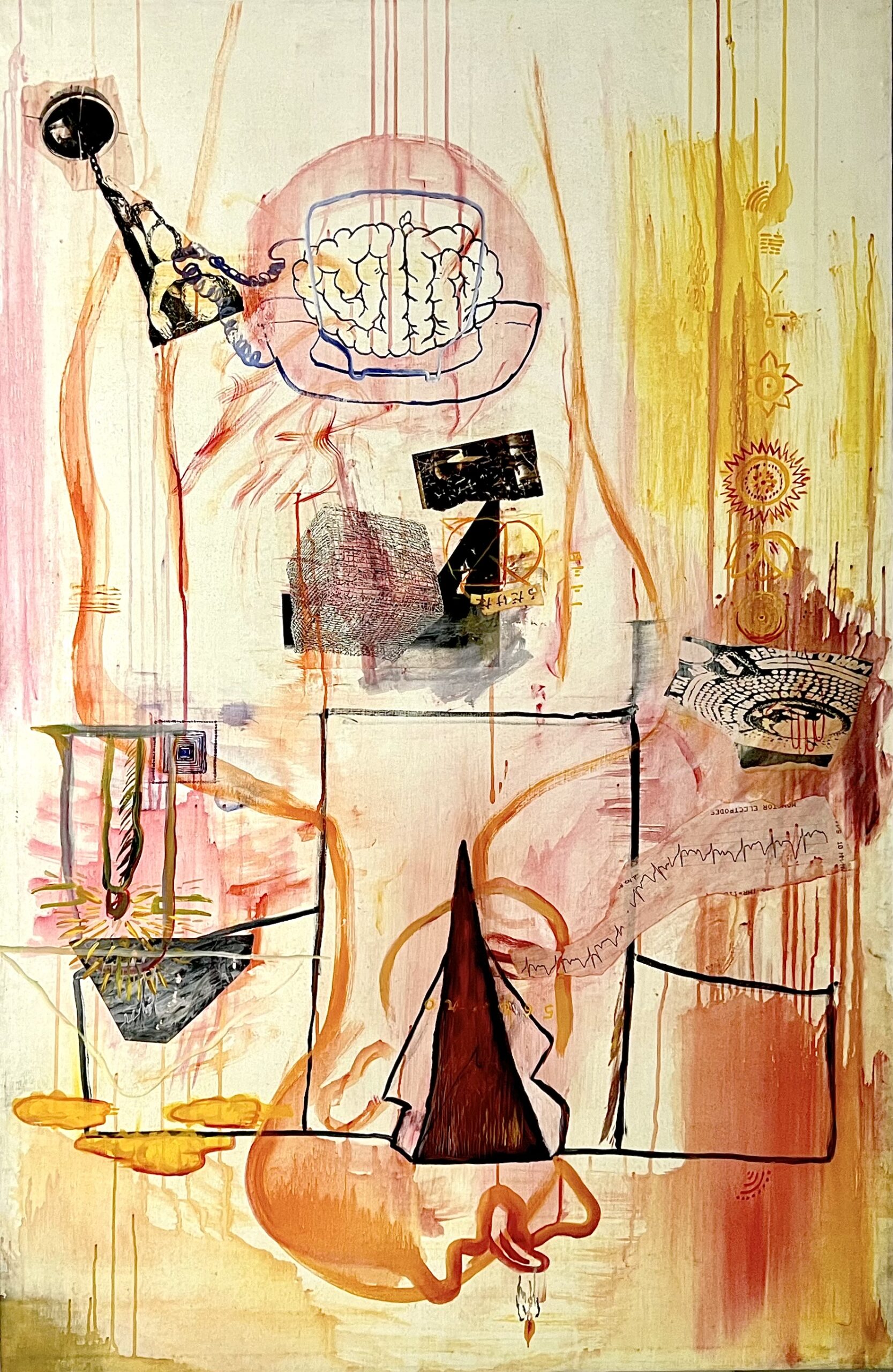
Neo-Baba No.2
1995, Mixed media on canvas, 148 x 96 cm
Private Collection
Lin Hsin Hsin 林欣欣 (b. 1952)
A pioneer of digital art in Singapore, Lin Hsin Hsin is a multidisciplinary artist, technologist, and poet known for merging science and creativity in innovative ways. With formal training in mathematics and computer science, Lin has developed a unique practice that spans digital media, visual art, music, poetry, and technological invention.
Lin began exploring digital art in the 1980s, using software and algorithms to create works that emulate the aesthetics of both Chinese ink and Western oil painting. In 1994, she launched the Lin Hsin Hsin Art Museum, one of the world’s first virtual museums, and later created Singapore’s first 3D digital sculpture. Her innovations include 3D artworks generated purely from mathematical equations, robosculpted digital forms, and interactive stereoscopic art—all created without traditional 3D hardware.
A prolific inventor, Lin has developed numerous creative technologies, including In-Camera Painting (ICP), the Android-based TANGO and STEP systems, and virtual instruments such as I-Musika. Her digital performances—often combining real-time finger choreography, sound, and code—have been presented internationally, including at InterSculpt (Paris), Ars Electronica (Austria), and Oxford University.
Alongside her digital practice, Lin has produced oil paintings, collages, paper and Plexiglas sculptures, and has published ten poetry collections. Her multimedia works reflect her belief that “science is the governor of art”, weaving together geometry, nature, technology, and sound into a distinctive artistic voice.
Lin has participated in over 220 exhibitions across 63 cities in 26 countries, including 16 solo shows. Her accolades include the Silver Medal from Société des Artistes Français (1985), First Prize in the IBM Singapore Art Award (1987), and the Virtuocity Award (1996). She was also recognised as one of 200 cyber personalities in the global 24 Hours in Cyberspace project.
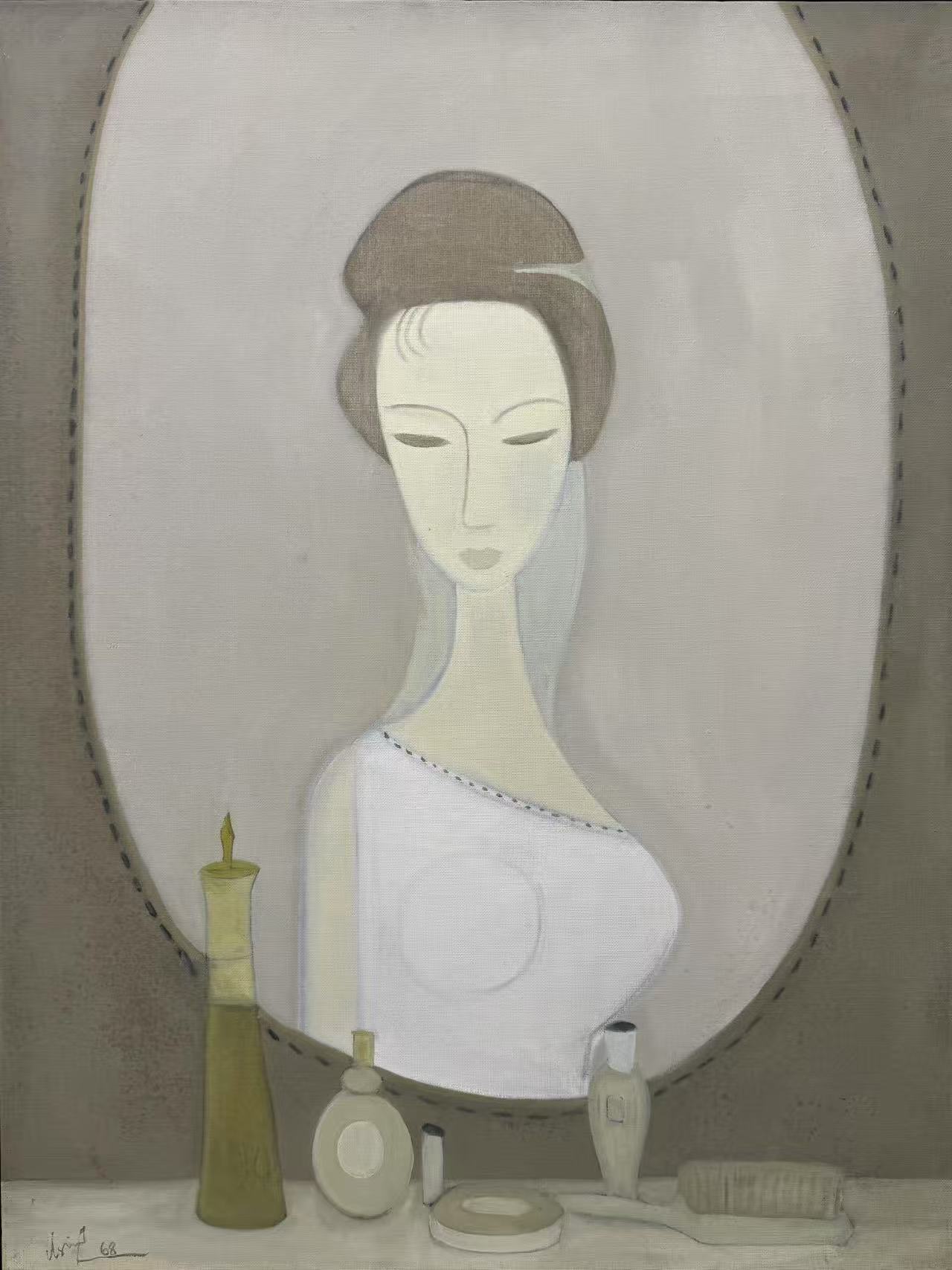
Reflection 3
1968, Oil on canvas, 91 x 68.5 cm
Gallery Collection
Louise Bourgeois (b. 1911 – d. 2010)
Born in Paris in 1911, Louise Bourgeois grew up in a household immersed in the craft of tapestry restoration. As a child, she assisted in the family workshop by sketching missing elements in the designs—a formative experience that would later inform her artistic practice. The emotional turmoil of her early life, especially her father’s long-term affair with the family’s English tutor, left a lasting psychological imprint, shaping much of the thematic content of her work.
Initially studying mathematics, Bourgeois ultimately turned to art and relocated to New York in 1938 after marrying American art historian Robert Goldwater. They raised three sons together.
Though she began her career in painting and printmaking, Bourgeois transitioned to sculpture in the late 1940s. Her artistic output paused during the 1950s and early 1960s, a period during which she underwent intensive psychoanalysis. Returning to the public eye in 1964, she exhibited a new body of surreal, biomorphic sculptures—distinct from the upright, totemic forms of her earlier work. From then on, her practice became defined by fluid shifts in material, scale, and style, while continuously revisiting recurring emotional themes such as fear, jealousy, anger, and isolation.
Her deeply personal and psychologically charged work gained wider recognition in the 1970s and 1980s as the art world began to embrace content-driven and conceptual practices. A major turning point came with her 1982 retrospective at The Museum of Modern Art in New York—her first at age 70—which brought her critical acclaim and renewed energy.
In the decades that followed, Bourgeois created some of her most iconic works, including her monumental spider sculptures, immersive “Cells,” suspended figures, and textile pieces made from her own clothing. Drawing and printmaking remained central to her practice throughout her life. For Bourgeois, art was not just a form of expression—it was a means of survival. As she famously said, “Art is a guarantee of sanity.”
She passed away in New York in 2010 at the age of 98.
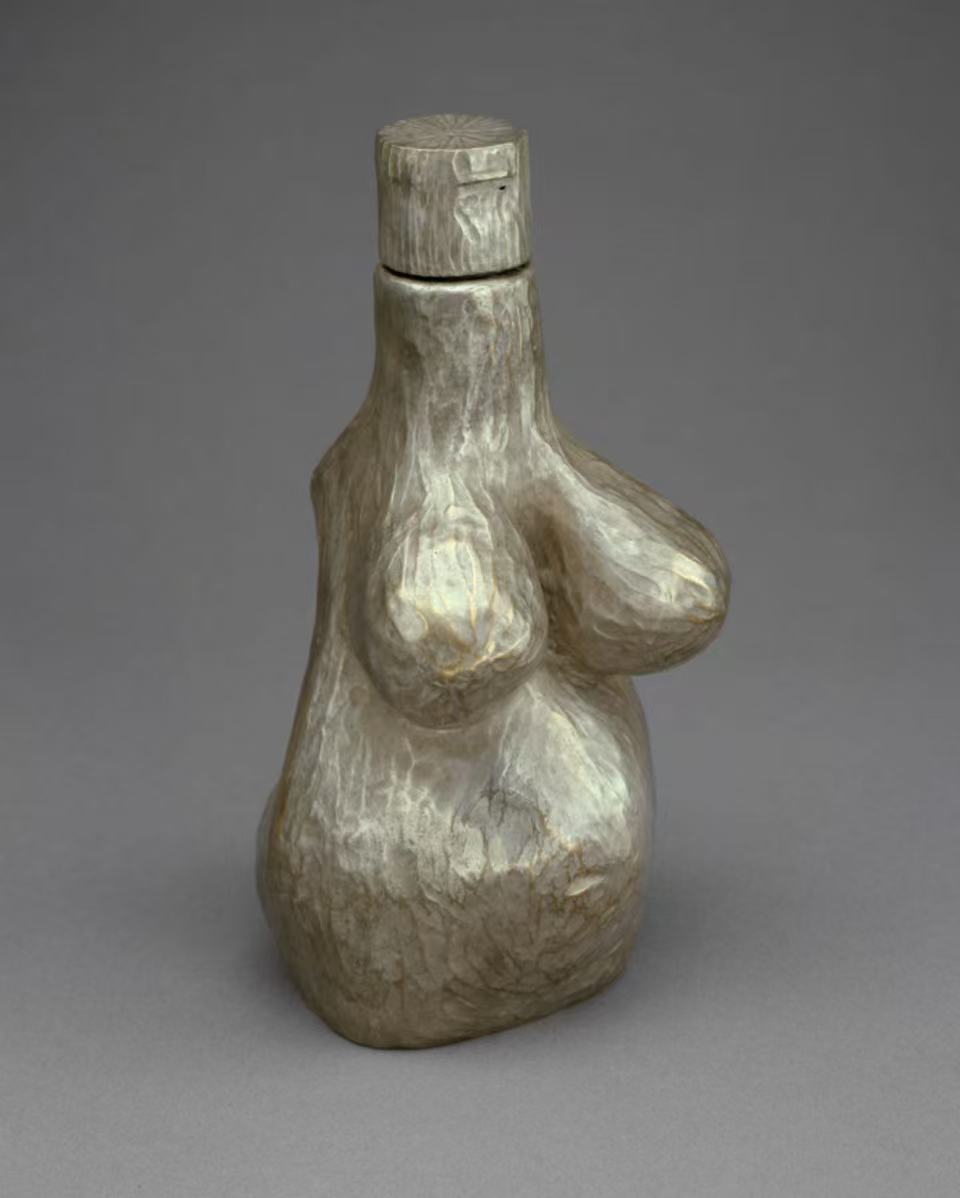
Femme
2006, Bronze, silver nitrate and polished patina, 19.7 x 8.9 x 8.3 cm
Private Collection
With its raw, tactile surface and exaggerated breasts, Femme distills womanhood into a totemic form—both iconic and unsettling. Louise Bourgeois transforms bronze into something strangely intimate: a body reduced and revered, carved with emotion, vulnerability, and power.
Part bottle, part body, Femme plays with dualities—containment and exposure, fertility and fragility. It’s a portrait not of one woman, but of the contradictions that define us all.
Bourgeois is widely regarded as one of the most important artists of the 20th century. Her radical use of autobiography, emotion, and the female body broke new ground in sculpture and paved the way for generations of feminist and conceptual artists.
Nam June Paik 白南准 (b. 1932 – d. 2006)
A visionary artist and pioneer of video art, Nam June Paik reshaped contemporary art through his radical integration of technology and performance. A founding member of the international Fluxus movement, Paik is celebrated for his innovative use of television and video in sculptural installations and multimedia environments—works that anticipated the rise of global telecommunications and digital culture.
Born in Seoul in 1932 to a wealthy family, Paik trained as a classical pianist before relocating to Japan during the Korean War. He earned a degree in aesthetics from the University of Tokyo and later pursued graduate studies in music in Munich. In 1958, a pivotal encounter with avant-garde composer John Cage inspired Paik to push the boundaries of music and art. He began incorporating theatrical elements, found objects, and pre-recorded sound into his performances, eventually developing what he called “action music.”
By the early 1960s, Paik had joined the Fluxus movement and was collaborating with artists such as Karlheinz Stockhausen and George Maciunas. After moving to New York in 1964, Paik formed a long-running creative partnership with cellist Charlotte Moorman, producing iconic performance works such as Opera Sextronique (1967) and TV Cello (1971).
Paik’s experiments with video began in 1963 with Zen for TV, using modified television sets to create new visual experiences. Collaborating with engineer Shuya Abe, he developed the Paik/Abe Video Synthesizer in 1969, enabling real-time manipulation of video imagery. These innovations led to major works including Robot K-456 (1964), Global Groove (1973), Good Morning Mr. Orwell (1984), and the Fin de Siècle series.
Throughout his career, Paik remained committed to exploring the relationship between technology, culture, and human experience. His art often carried political undertones—such as the anti-war performance Guadalcanal Requiem (1977/79)—and emphasized the potential of technology to connect people across borders.
Paik’s influence continues to resonate globally. His belief in a world that is “half natural and half technological” underpinned a practice that was deeply experimental yet profoundly human. His legacy as the “father of video art” remains foundational to contemporary media and conceptual art.
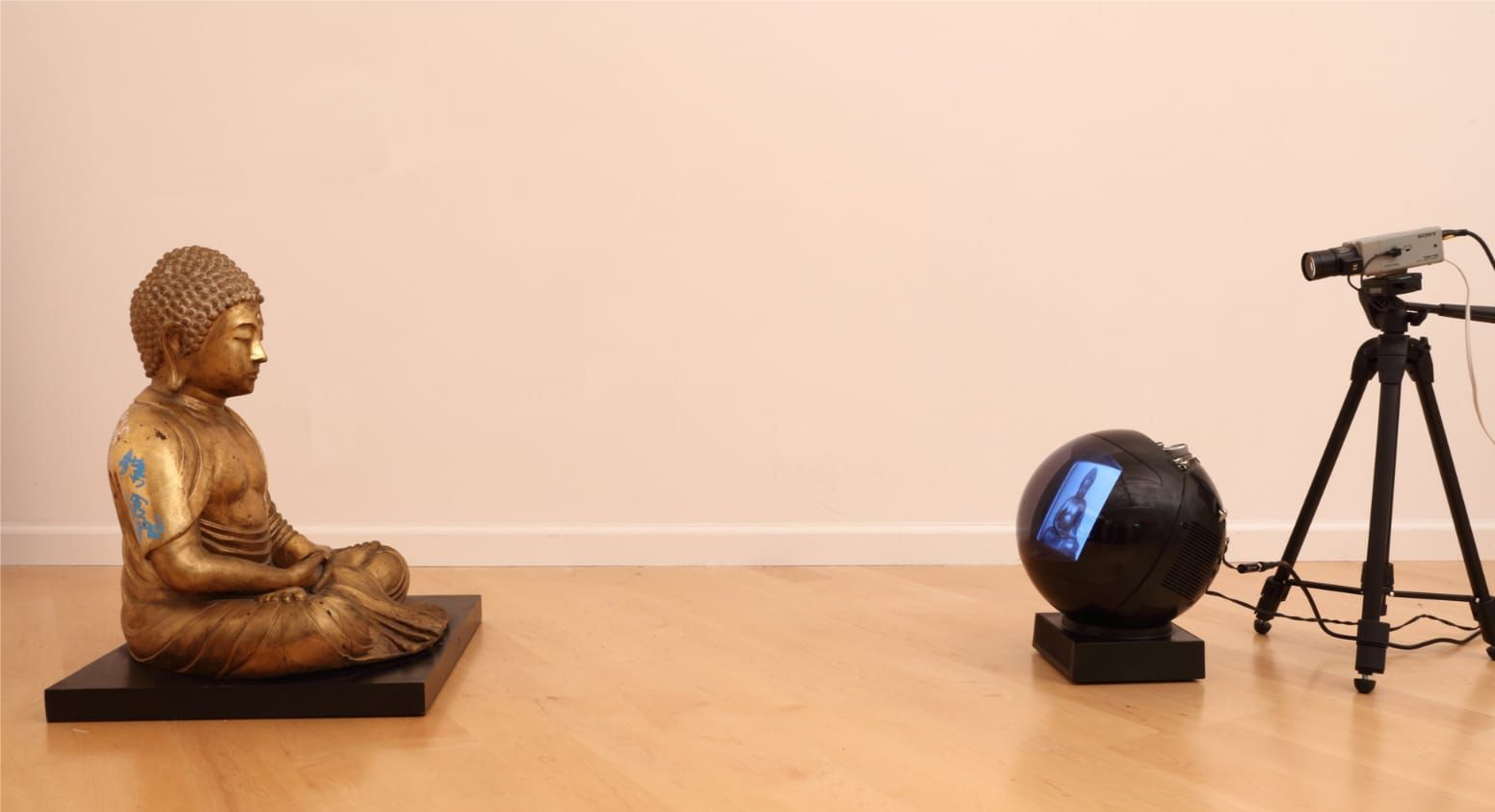
TV Buddha (Golden Buddha)
2005, Closed circuit video with black and white JVC Television, Buddha: 55.88 x 48.9 x 46.99 cm
Private Collection
In this quietly powerful installation, Nam June Paik — widely regarded as the father of video art — invites us into a contemplative dialogue between the ancient and the modern, the spiritual and the technological.
TV Buddha features a traditional seated Buddha sculpture in meditative pose, facing a vintage black-and-white television. A closed-circuit camera captures the statue’s image and transmits it in real time to the monitor, creating a loop in which the Buddha gazes at its own likeness. This deceptively simple configuration unfolds into a profound meditation on self-perception, feedback, and the nature of consciousness.
The work offers multiple readings: Is the Buddha passively watching itself, or actively engaged in a kind of spiritual self-surveillance? Is this a moment of enlightenment, or of entrapment? By placing sacred iconography within a technological circuit, Paik collapses time and ideology—suggesting that modern media can be a site of introspection just as potent as ancient ritual.
In our present moment of screen-saturated life, TV Buddha remains startlingly relevant. It asks us to consider what we reflect back to ourselves through media, and whether, like the Buddha in this work, we are truly seeing—or merely watching.
Octora Chan (b. 1982)
Octora Chan is an Indonesian contemporary artist whose practice is rooted in sociocultural observation and a deep interest in human behavior. She holds degrees in both Law from Parahyangan Catholic University (2001–2006) and Fine Arts from the Bandung Institute of Technology (2002–2007).
Octora held her first solo exhibition The Nyonya’s Project at the French Cultural Centre in Bandung in 2007, the same year she participated in Biennale Jogja IX: Neo-Nation. In 2008, she completed a residency at Cemeti Art House, Yogyakarta (Landing Soon #10), marking the beginning of her involvement in artist residencies and international collaborations.
In 2012, she received the Recognition Achievement Award at the Bandung Contemporary Art Awards #02, which led to an invitation from the French government to exhibit at Centre Intermondes, La Rochelle.
Her second solo exhibition, The Edge of Awareness (Galeri Canna, Jakarta, 2015), curated by Asmudjo Jono Irianto, delved into themes of human aggression and self-destruction. Rather than addressing specific events, her works approach violence and conflict as universal aspects of human nature—expressed through a distinct aesthetic sensibility.
Octora’s artistic process often begins with careful attention to the cultural and social dynamics around her, transforming these insights into compelling visual narratives.
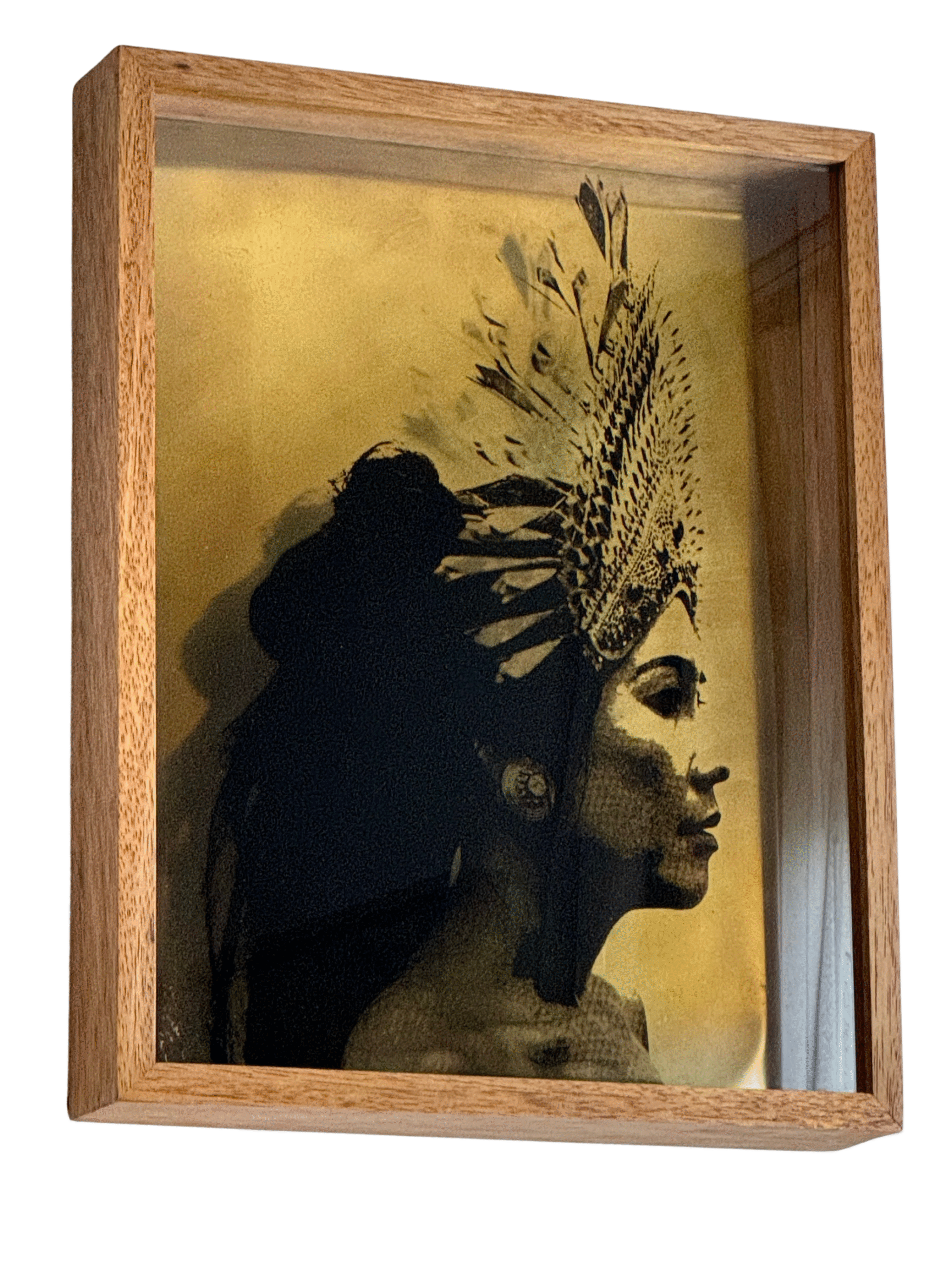
Ad Infinitum
2019, Screen print on glass, brass, 46 x 35.5 cm
Collection of Krystina Lyon
In Ad Infinitum, Octora consciously appropriates the visual codes of ethnographic photography—the neutral backdrop, standardized poses, off-centre gaze, ornate accessories, and traditional clothing—to “liberate” the young Balinese legong dancers found in the archives of Leiden University. By inserting her own self-portrait and radically reversing the gaze, she reframes the colonial image and offers a new interpretation, challenging the dominant narratives encoded in archival photographs. In doing so, she enacts a powerful act of visual reclamation for the twenty-first century.
Pearl C. Hsiung 熊家珍 (b. 1973)
Pearl C. Hsiung is a Los Angeles-based artist whose vibrant painting, video, and installation works explore the intersections of human, natural, and artificial realms. Drawing from metaphysical, sublime, and anthropocentric perspectives, Hsiung investigates how these entanglements reshape our perception of landscape and ecology. Her recent practice questions the theoretical and physical boundaries between species and systems, revealing the contradictions embedded in human-centered environmental logic.
Hsiung’s works have been widely exhibited in solo and group exhibitions across the U.S., Europe, and Asia. Notable group presentations include Made in L.A. 2012 at the Hammer Museum, California Biennial 2006 at the Orange County Museum of Art, Busan Biennale 2006 in South Korea, The Beyond: Georgia O’Keeffe and Contemporary Art at the North Carolina Museum of Art and Crystal Bridges Museum of Art, and Expander at the Royal Academy of Arts, London. Her solo exhibitions include Fault Zone and Full Gorge at Visitor Welcome Center, Los Angeles; Yellowstoner at Human Resources, Los Angeles; and To the Big Life at Max Wigram Gallery, London.
She is the recipient of a CCF Fellowship for Visual Arts, a Getty Fellowship, and the 2015 Mid-Career Artist Grant. Hsiung earned her MA and Postgraduate Diploma in Fine Art from Goldsmiths, University of London, and her BA from UCLA’s School of Art and Architecture.
Currently, Hsiung is completing a large-scale glass mosaic mural titled High Prismatic, commissioned by LA Metro for the Grand Av Arts/Bunker Hill station in downtown Los Angeles.
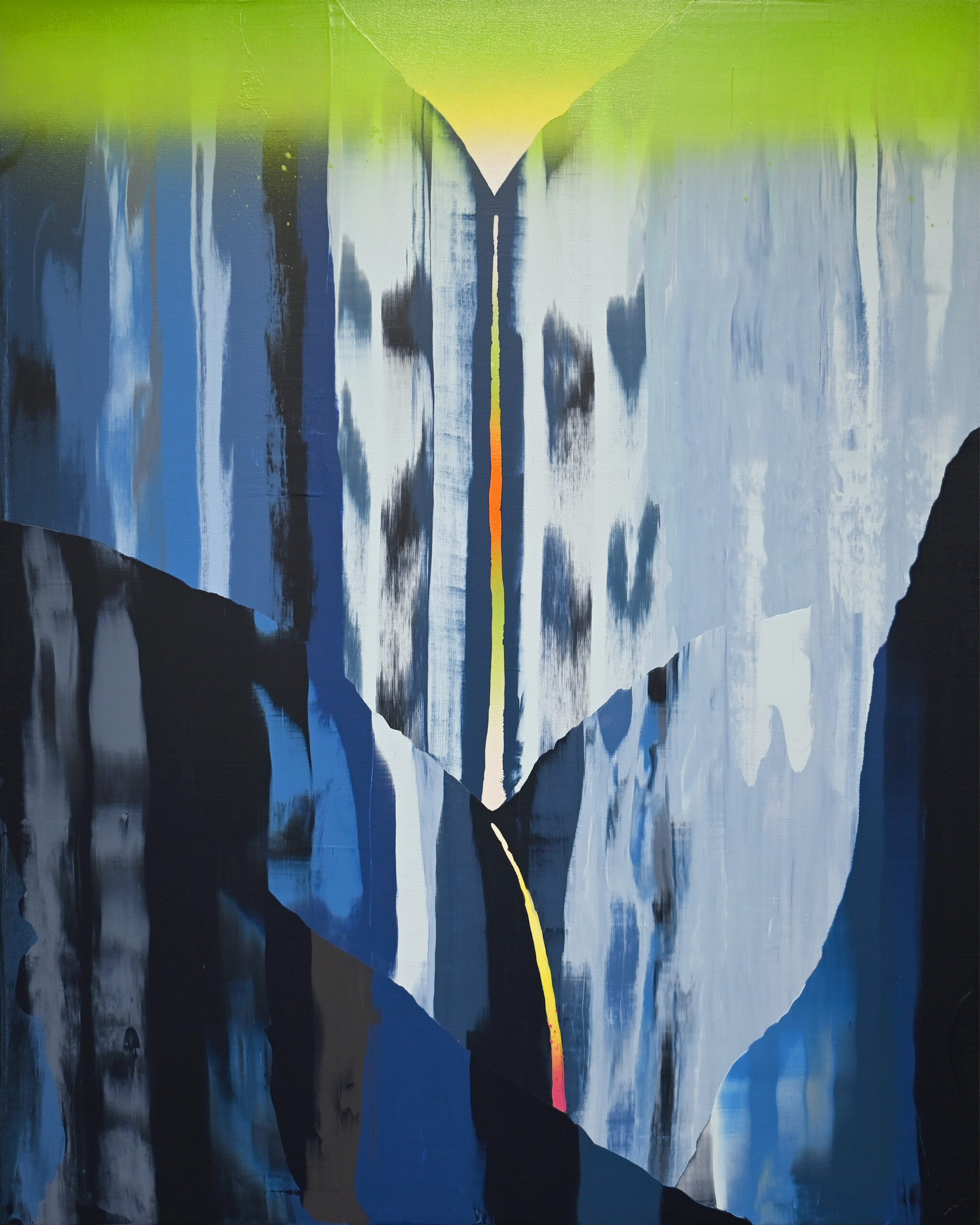
Phoenix II
2022, Acrylic on canvas, 76.2 x 61 cm
Gallery Collection
Shao Jingkun 邵晶坤 (b. 1932 – d. 2019)
Shao Jingkun is a Chinese painter best known for her work in oil painting. She graduated from the Drawing Department of the Central Academy of Fine Arts in 1954 and began her career as an editor at the Huabei (North China) People’s Publishing House. In 1957, she joined the Beijing Art Institute as a lecturer, and in 1964, returned to the Central Academy of Fine Arts, where she continued her teaching career as an associate professor.
Shao’s contributions to Chinese painting and art education span several decades. Her legacy continues through her daughter, Shao Fei (b. 1954), a prominent contemporary artist and former member of the Stars Art Group, who was previously married to the poet Bei Dao.

Wild Flowers
1990, Oil on canvas, 72.5 x 61 cm
Gallery Collection
Shi Hu 石虎 (b. 1942 – d. 2023)
Shi Hu is a Chinese painter known for his expressive depictions of figures and animals, as well as his dynamic use of color and brushwork. He studied at the Beijing Arts and Crafts College and the Zhejiang Academy of Fine Arts, later teaching at the Beijing Arts and Crafts College from 1968 to 1969. In 1977, he was appointed art director at the People’s Fine Art Publishing House in Beijing.
A turning point in Shi’s artistic journey came during his extensive travels in Africa in 1978. Profoundly inspired by the vivid colors, wildlife, and cultural richness he encountered, Shi developed a distinctive visual language reflected in his celebrated African Sketches series. His work blends elements of Western modernism and abstraction with traditional Chinese techniques, notably the boneless brush method, resulting in bold compositions marked by strong forms and luminous tones.
In the late 1980s, Shi was invited to the United States as a visiting scholar and later relocated to Macau. Since 1989, he has exhibited widely in the United States, Canada, and Singapore. In 1996, he was appointed Director of the International Chinese Artists Association in Macau. A major solo exhibition of his work was held at the National Art Museum of China in 2004, which subsequently toured other countries in Asia.

The Hug
1993, Ink and oil pastel on paper, 144 x 75 cm
Gallery Collection
Shui Tit Sing 许铁生 (b. 1914 – d. 1997)
Shui Tit Sing was a Chinese-born Singaporean artist best known for his evocative wood sculptures and contributions to art education. He studied at the Hangzhou National College of Art, graduating from the Painting Department in 1937, and later completed his studies in Western Painting at the National College of Art in 1940. In 1948, Shui relocated to Singapore, where he taught art and Chinese language at Catholic High School for nearly three decades, from 1948 to 1977.
A regular participant in major group exhibitions in Singapore, Shui was also an active member of the Society of Chinese Artists and took part in regional art tours in the 1960s and 1970s with the influential Ten Men Art Group.
From 1968 onwards, Shui dedicated himself fully to wood carving. Working primarily with teak, he sought to express the spirit of everyday life, portraying ordinary people engaged in daily labour with sincerity and respect. Rooted in an “oriental” sensibility, Shui’s sculptures embody a deep humanism and clarity of form, reflecting his belief that art should closely mirror life.
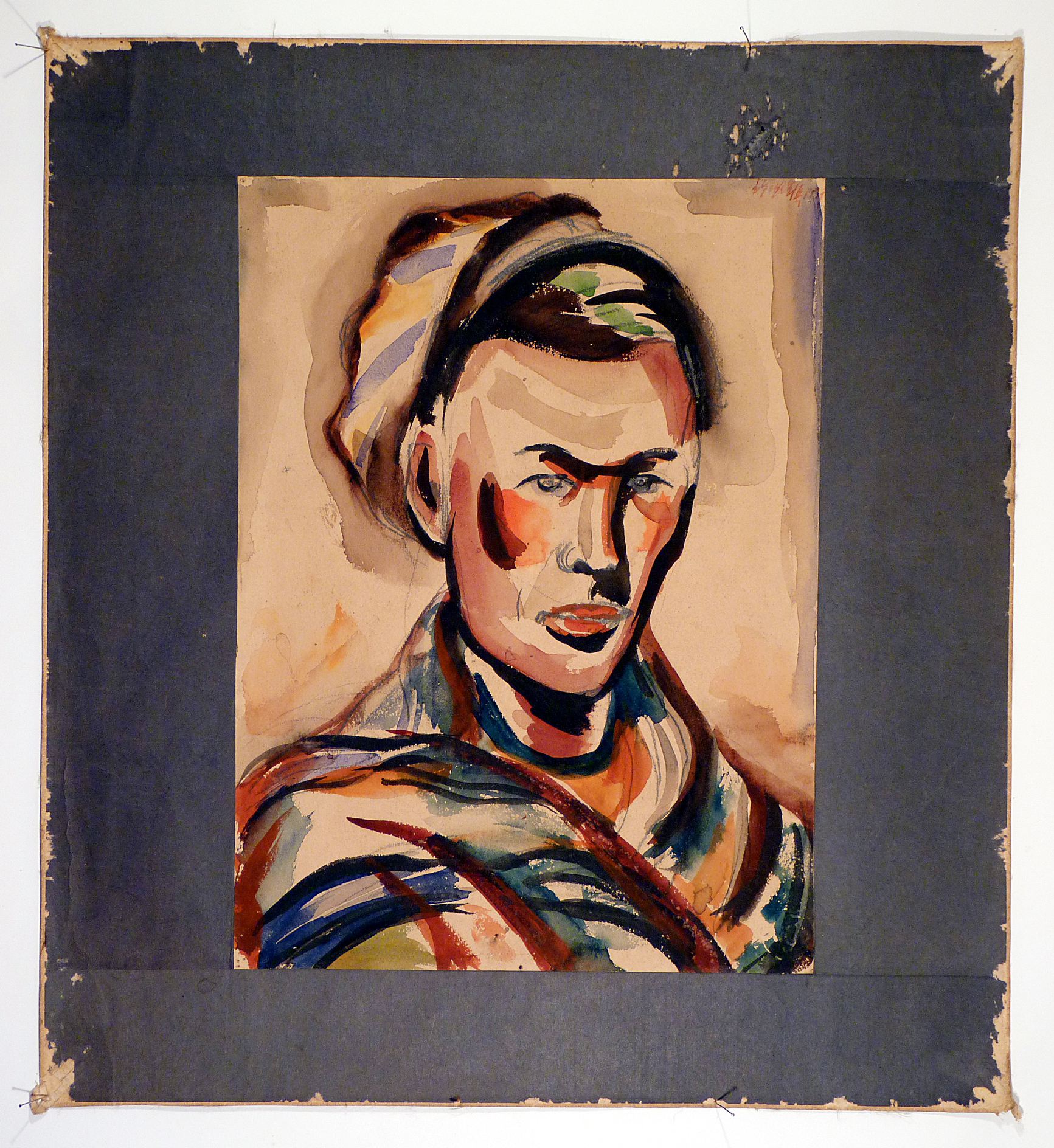
Self Portrait
1939, Watercolour on paper, 32 x 23.5 cm
Gallery Collection
Su Yuxin 苏予昕 (b. 1991)
Su Yuxin is a Los Angeles–based artist whose practice explores the intersection of painting, material history, and the natural sciences. Treating painting as a space where perceptual, cultural, and geological systems converge, Su approaches the medium as both a visual language and a record of material exchange.
Her work delves into the historical and ecological trajectories of pigments—tracing their origins, trade routes, and transformations. By collecting and processing raw materials from across the earth’s crust, she reconfigures them through drawing, layering, compression, and accumulation. For Su, painting becomes a form of geological mapping, where organic, mineral, and synthetic matter coalesce to form new terrains.
While grounded in the tradition of landscape, her practice reimagines it as an active field shaped by time, migration, and human intervention. Su continues to gather pigments and materials from diverse locations, bringing them into her studio to inform a practice that is at once tactile, conceptual, and rooted in inquiry.

The Cave of the Fireflies
2024, Mixed media on board, 134 x 100 cm
Private Collection
Tan Choh Tee 陈楚智 (b. 1942)
Tan Choh Tee is a Singapore-based painter best known for his impressionist oil paintings capturing still life and vanishing streetscapes of old Singapore. Deeply influenced by the French Impressionists, Tan developed a signature style rooted in direct observation and plein-air painting, often portraying scenes from Chinatown, Jalan Besar, and Geylang with sensitivity and nostalgia.
Tan migrated to Singapore in 1953 and enrolled at the Nanyang Academy of Fine Arts (NAFA) in 1958, where he studied under pioneers of the Nanyang Style including Cheong Soo Pieng, Georgette Chen, Liu Kang, and Chen Wen Hsi. After graduating in 1962, he worked as a book designer while continuing to paint in his spare time. His early artistic promise was recognised with the Highly Commended Award from Esso Singapore in the same year.
In 1976, Tan left his full-time job to pursue painting professionally. That same year, he received the Special Award at the National Day Art Exhibition. As a full-time artist, he dedicated himself to documenting rapidly disappearing urban landscapes, creating a significant body of work that resonated with both public and private collectors. He also taught at NAFA from 1984 and attended a masterclass at the Central Academy of Fine Arts in Beijing in 1987.
Tan’s practice expanded in the 1980s and 1990s as he travelled extensively across Asia, Europe and North America, painting scenes from Thailand, India, France, and China. In 1998, he was selected as NAFA’s first artist-in-residence at the Cité Internationale des Arts in Paris.
Over the years, Tan has held nine solo exhibitions and participated in more than 50 group exhibitions internationally. His works have been acquired by major auction houses including Christie’s and Sotheby’s, as well as institutions such as the National Museum of Singapore and the National Museum of Brunei Darussalam.
Tan was awarded the Cultural Medallion for Visual Arts in 2006 and the Asia Visual Arts Award from the Korean National Cultural Research Organisation in the same year. He continues to paint from his studio in Wessex Estate, upholding a lifelong commitment to the poetic expression of lived experience through art.
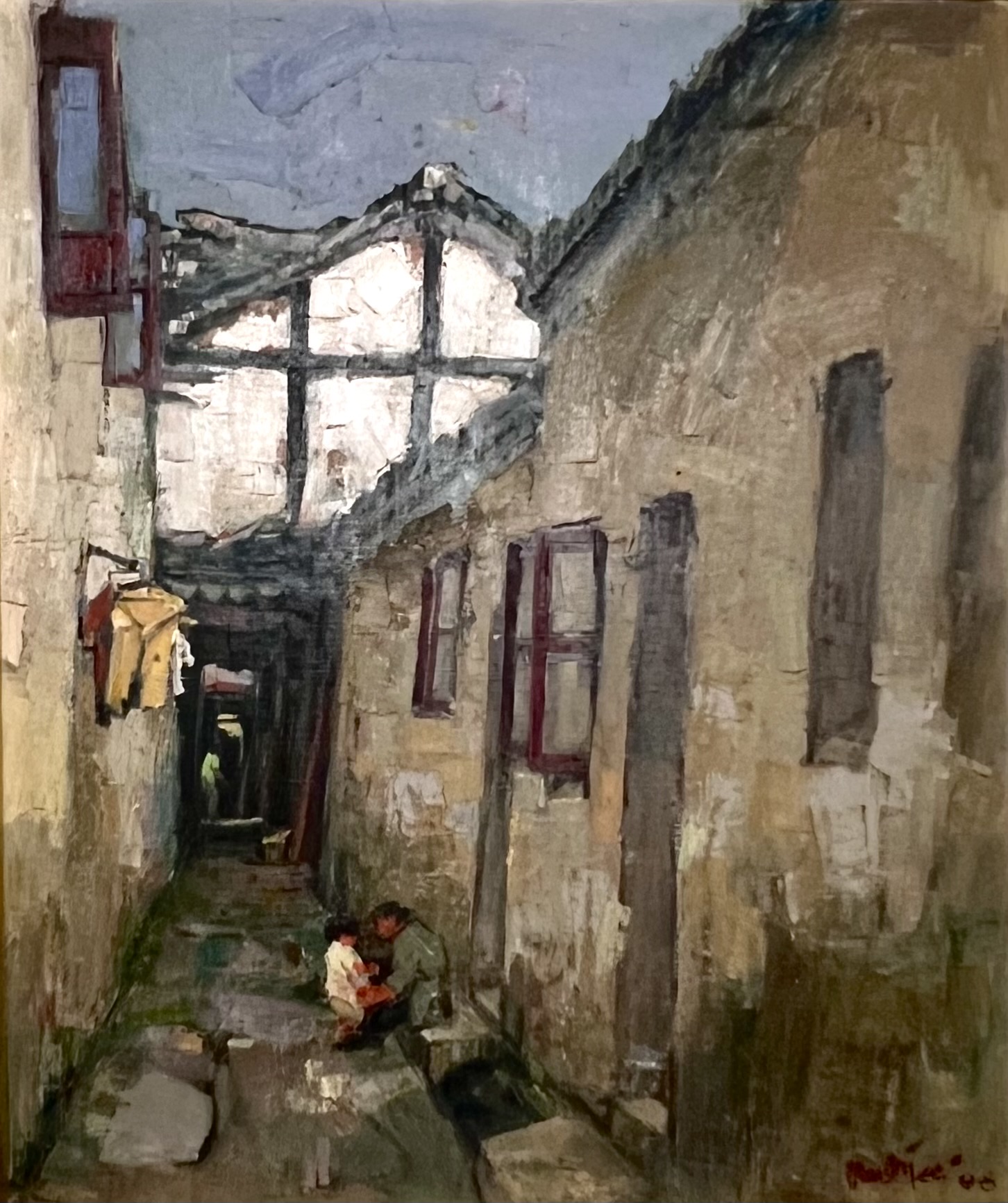
Back Alley
2008, Oil on canvas, 70 x 60 cm
Gallery Collection
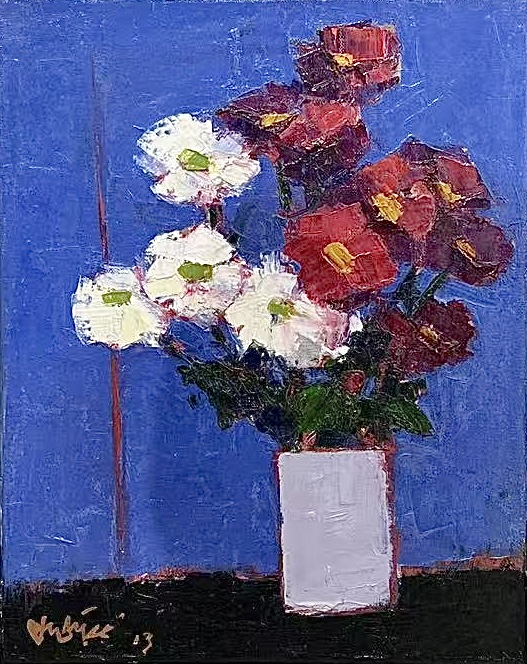
Floral Dreams in Blue
2013, Oil on canvas, 35 x 27.5 cm
Gallery Collection
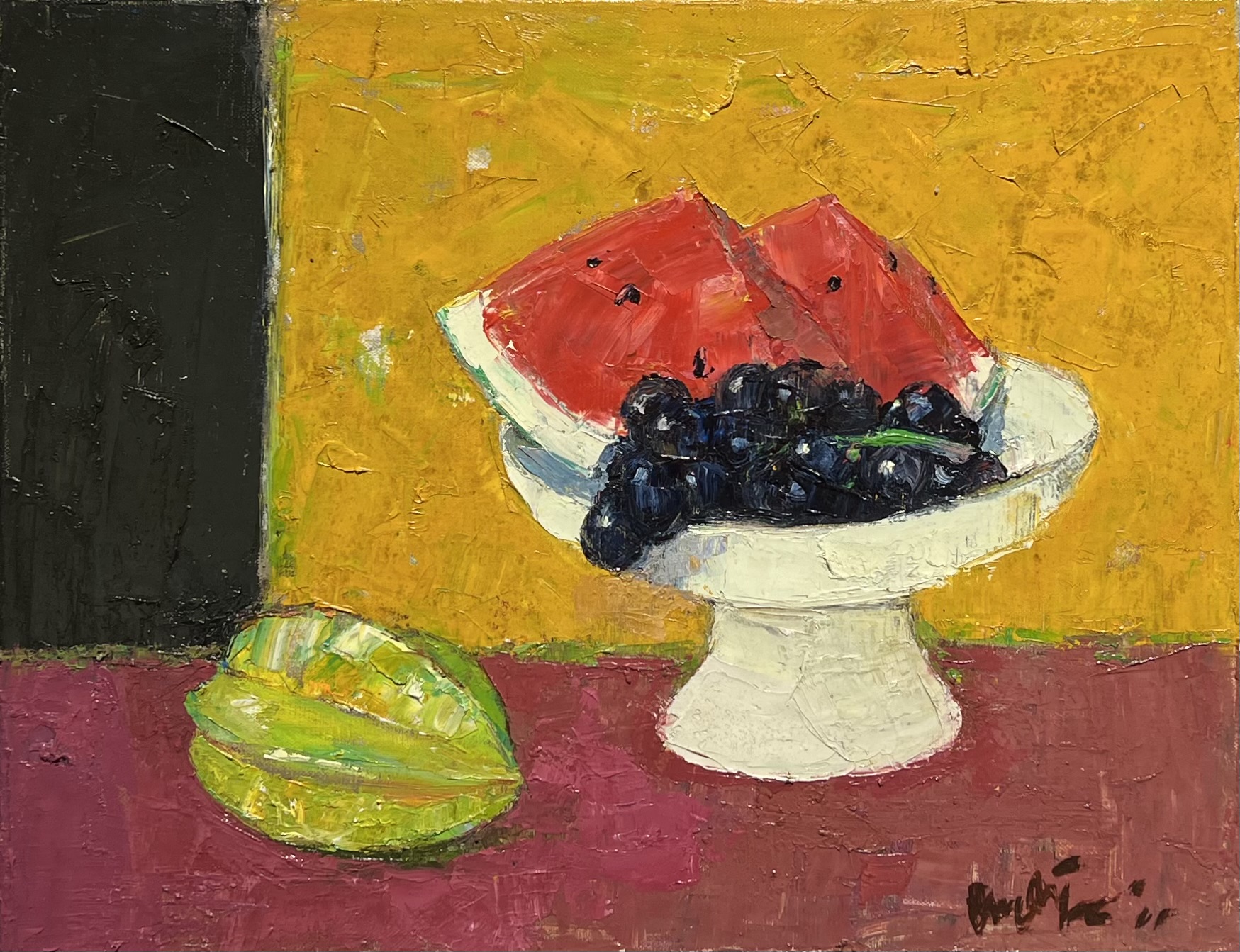
Summer Fruit
2011, Oil on canvas, 35.5 x 45.5 cm
Gallery Collection
Tang Da Wu 唐大雾 (b. 1943)
Tang Da Wu is a pioneering figure in contemporary art in Southeast Asia, known for his experimental and socially engaged practice across performance, installation, sculpture, and mixed media. Widely recognised for founding The Artists Village in 1988, Tang has been instrumental in shaping Singapore’s contemporary art landscape and fostering a spirit of collaboration among younger generations of artists. His work often weaves together environmental concerns, mythology, and social commentary to challenge conventions and provoke discourse.
Tang studied fine art at Birmingham Polytechnic and later earned his MFA from Goldsmiths College, University of London. Since his return to Singapore in the late 1970s, he has championed the role of art in public life, using raw materials such as banana leaves, rubber, and tin to create symbolic and locally grounded installations. His performances are equally direct and poetic, frequently involving his own body to confront issues such as colonial history, cultural identity, and ecological destruction.
Tang has exhibited extensively both in Singapore and internationally. Landmark presentations include They Poach the Rhino, Chop Off His Horn and Make This Drink (1989), Tiger’s Whip (1991), and Tapioca Friendship Project (1994–95). His work has been featured in major exhibitions such as the Fukuoka Asian Art Triennale, Kwanju Biennale, Venice Biennale (2007), and Awakenings: Art in Society in Asia 1960s–1990s at National Gallery Singapore.
He has received numerous accolades including the Visual Arts Award from the Arts Council of Great Britain (1978), the Fukuoka Asian Culture Prize (1999), and the Japanese Chamber of Commerce Foundation Prize (1995). Tang continues to live and work in Singapore, where his practice remains a cornerstone of critical and experimental art in the region.
In this compelling portrait series from 2005, Singaporean artist Tang Da Wu explores themes of identity and transformation through the raw expressiveness of Chinese ink. Titled Bumiputra—a Malay term meaning “sons of the soil”,the work is a collection of portraits of residents of Hougang, a Northern suburb of Singapore that was developed from forests and pig farms into a residential town during the 1980s. Since the 1960s, the Singaporean city-state has been expanding through the dismantling of communities and the establishment of re-housing programs. By recording the original inhabitants of the area and assembling the images around an image of a well, a traditional meeting place, Tang highlights the way in which too-rapid development can erode community.
Situated within Bumiputra, these works speak to Tang’s enduring engagement with social and environmental themes—from deforestation and animal endangerment to shifting communal identities. Their raw simplicity embodies his belief that art should provoke thought and foster connection—not merely please the eye.
The power of these portraits lies in their ambiguity—their refusal to present definitive narratives. Instead, they invite reflection on how identities are formed, eroded, and remembered. Ink becomes a metaphor for fluid memory, and the incomplete visages, an act of witnessing. In their hushed yet poignant presence, they echo Tang Da Wu’s lifelong exploration of art as both social engagement and spiritual resonance.
Tesfaye Urgessa (b. 1983)
Tesfaye Urgessa lives and works in Addis Ababa. Trained under modern master Tadesse Mesfin in Ethiopia and later at the Staatliche Akademie der Bildenden Künste Stuttgart, Urgessa synthesizes Ethiopian iconography with classical figurative painting to forge a distinct visual language. His dynamic compositions of intertwined, writhing bodies evoke psychological tension and explore complex themes around race and identity politics within intimate domestic settings.
Urgessa has exhibited widely internationally, with notable shows including Oltre/Beyond at the Uffizi Gallery, Florence (2018); The Stand-Ins: Figurative Painting from the Collection at Zabludowicz Collection, London (2021); The New African Portraiture at Kunsthalle Krems, Austria (2022); and a solo presentation at Rubell Museum Miami (2022). His work is held in major public and private collections worldwide, such as Zabludowicz Collection (London), Castello di Rivoli (Turin), Uffizi Gallery (Florence), Kunstmuseum Stuttgart, Rubell Museum (Miami), Staatsgalerie Stuttgart, and the Museum of African Contemporary Art Al Maaden in Marrakech. Urgessa represented Ethiopia at the 60th Venice Biennale (La Biennale di Venezia).

Untitled
2023, Oil on canvas, 25 x 25 cm
Private Collection
Wu Guanzhong 吴冠中 (b. 1919 – d. 2010)
Wu Guanzhong is one of the most renowned contemporary Chinese painters, celebrated for his impressionistic depictions of China’s architecture, landscapes, plants, animals, and people. His unique style blends Western modernist influences with traditional Chinese ink painting, creating works that distill natural scenery into simple yet powerful abstract forms. Wu was also an accomplished writer, publishing numerous essays and painting collections. In 1992, he became the first living Chinese artist to exhibit at the British Museum.
Born in Yixing, Jiangsu Province, in 1919, Wu initially studied electrical engineering at Zhejiang Industrial School before transferring to the National Arts Academy of Hangzhou, where he studied both Chinese and Western painting under masters Pan Tianshou and Lin Fengmian. During the Sino-Japanese War, the academy relocated westward, eventually settling in Chongqing. Inspired by Lin Fengmian’s experiences in France, Wu and his peers, including Zhu Dequn and Zhao Wuji, learned French and, in 1947, Wu received a government scholarship to study at the École Nationale Supérieure des Beaux-Arts in Paris. There, he was influenced by artists such as Jean Souverbie, Utrillo, Braque, Matisse, Gauguin, Cézanne, Picasso, and Van Gogh.
Returning to China in 1950, Wu introduced Western artistic concepts at the Central Academy of Art in Beijing, despite the dominance of socialist realism and political pressures that labelled him a “fortress of bourgeois formalism.” His refusal to conform led to multiple transfers and restrictions, culminating in a ban on painting and teaching during the Cultural Revolution and forced labor in Hebei Province.
In 1973, Wu was among artists rehabilitated to create public artworks, traveling the Yangtze River to gather inspiration for a large mural project, which was ultimately abandoned. Nevertheless, his draft scroll The Yangtze River (1974) marked a significant moment in his career. Wu’s full rehabilitation followed with a 1978 exhibition at the Central Academy.
Wu Guanzhong’s art combines Western color theory and composition with the tonal and spiritual qualities of Chinese ink painting. His work has been exhibited globally—in mainland China, Hong Kong, Taiwan, Singapore, Japan, Korea, England, and the United States—and remains deeply influential. Wu passed away in Beijing on June 25, 2010.
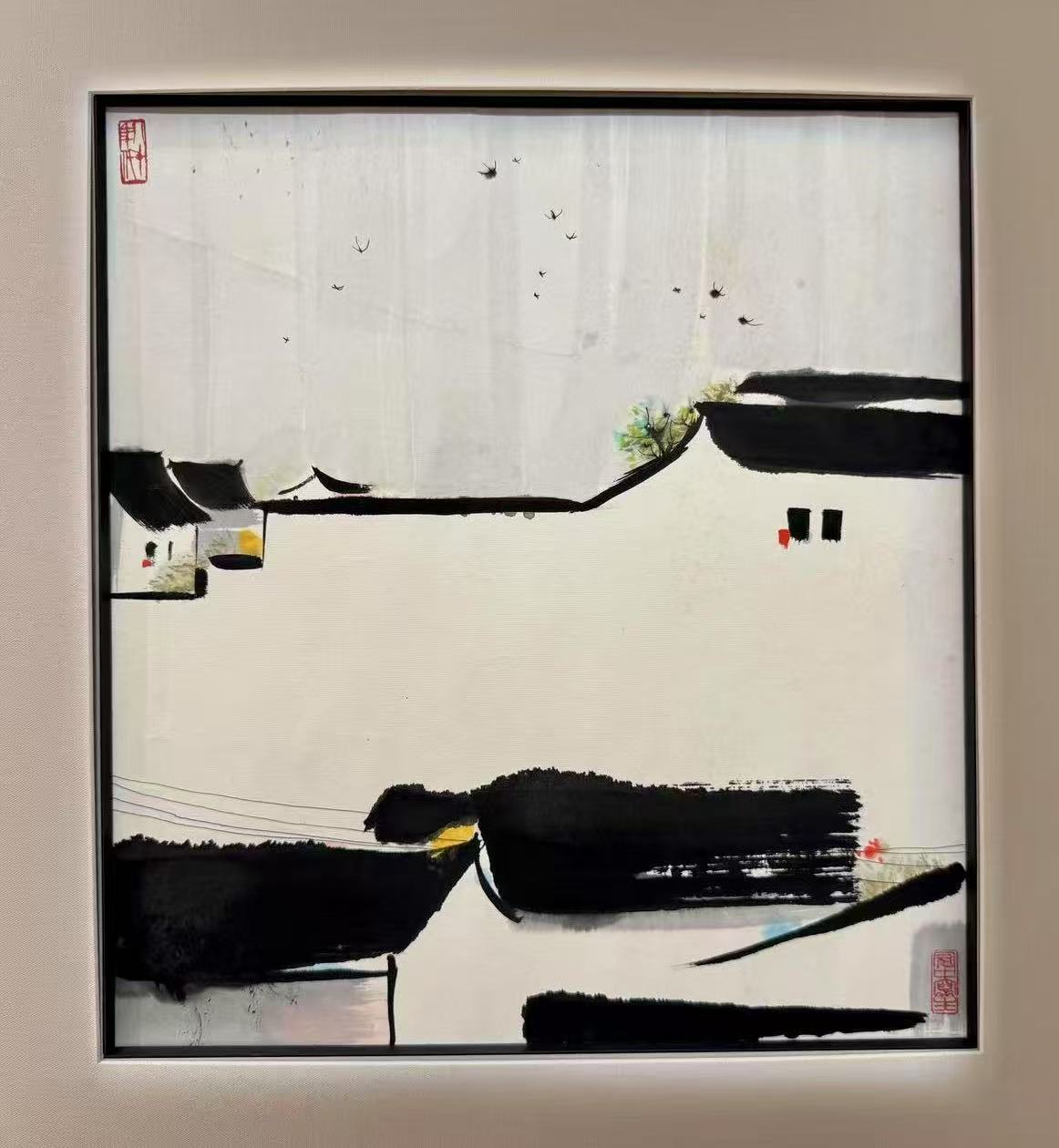
Big Mansion
c. 1980s, Ink on paper, 47 x 43 cm
Gallery Collection
Big Mansion, created in the 1980s, is a quintessential work from that period. He reduced every roof tile and wall in the courtyard to abstract symbols of planes and geometric forms, using blank spaces to invite viewers to fill in the passage of time and the expanse of space. He constructed a spiritual dwelling where memory and the present collide, and where poetry and structure interweave.
Here, the blank space adorned with swallows in flight is like the wind remembered — drifting through the years; the deep black ridges of the white walls evoke the land of his homeland — each line and plane supporting the roots of culture. As viewers gaze at the painting, they don’t just see a courtyard; they sense a quiet, distant emotional realm — this is Wu Guanzhong’s visual ode to nostalgia, and a high expression of his modern ink-painting language. This painting was selected for the 1990 “Masters of the East: Contemporary Chinese Painting” touring exhibition in Tokyo, where it was shown alongside works by Xu Beihong, Qi Baishi, and Fu Baoshi, underscoring Wu’s significant standing in the East Asian art world.
Yuko Mohri 毛利悠子 (b. 1980)
Yuko Mohri is an installation artist known for transforming reconfigured everyday objects and machine parts collected from cities worldwide into autonomous, self-contained “ecosystems.” Her works channel intangible energies such as magnetism, gravity, temperature, and light, creating complex, dynamic environments from disparate mechanical and domestic elements.
Recognized by Apollo Magazine as one of the 2016 40 Under 40 Asia Pacific artists and named among the “5 Essential Japanese Artists” by Blouin Artinfo, Mohri has received the Nissan Art Award (2015) and a grant from the Asian Cultural Council (2014). She has participated in prestigious residencies including the Victoria and Albert Museum and Camden Arts Centre in London.
Recent solo exhibitions include Childhood at Palais de Tokyo, Paris (2018); summer rains at SCAI THE BATHHOUSE, Tokyo; Assume That There Is Friction and Resistance at Towada Art Center, Aomori (2018); Same As It Ever Was at Project Fulfill Art Space, Taipei (2018); Voluta at Camden Arts Centre, London (2018); and Dissémination at The National Museum of Modern Art, Kyoto (2018).
Her work has been featured in group exhibitions such as The 5th Ural Industrial Biennial of Contemporary Art, Ekaterinburg, Russia (2019); Weavers of Worlds: A Century of Flux in Japanese Modern / Contemporary Art at the Museum of Contemporary Art Tokyo (2019); and Visible Soul: Around the Asia Collection of Benesse Art Site Naoshima at Fukutake House, Okayama (2019).
Yuko Mohri’s works are held in prominent public collections including Centre Pompidou, Paris; M+, Hong Kong; Musée d’art contemporain de Lyon; Museum of Contemporary Art Tokyo; Obayashi Foundation, Tokyo; and Queensland Art Gallery | Gallery of Modern Art, Brisbane.
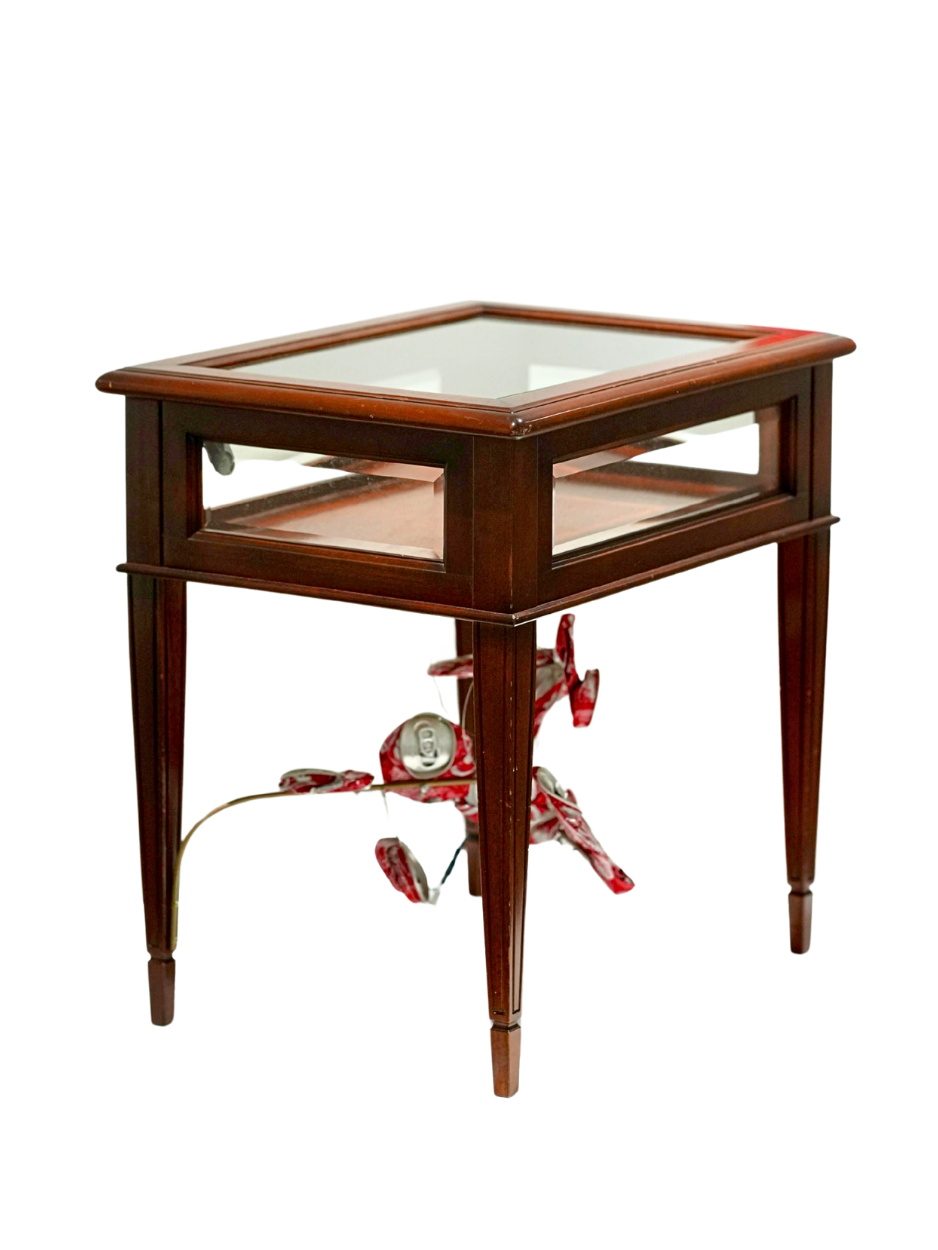
Urban Mining
2024, Side table, compressed cans, lights, 60.5 x 60 x 45 cm
Private Collection
In this installation, components such as abandoned street‑lamp heads, aluminum cans, copper wire, and electric motors form a densely interwoven material network. A live current flows through the compressed cans; wind and subtle vibrations occasionally close the circuit, illuminating miniature street‑lamp models in sporadic, flickering sequences — resembling telegraph signals amid urban ruins.
Reconfigured Waste: Crushed cola cans and old street‑lamp heads become active energy nodes — symbolizing an “urban mine” of hidden resources within the discarded. The work foregrounds spontaneity: each circuit closure and flash of light exists in the tension between randomness and necessity, reminding us to respect the uncontrollable aspects of the environment.
Slow your pace and truly linger. Notice how chance orchestrates fleeting bursts of light and delicate pulses within this living network. You’re invited not just to observe, but to resonate—to become part of the system’s gentle vibrations. In the soft murmur of discarded materials, a conversation unfolds between the artificial and the natural, between order and chaos. Here dwells a life of systems — untamed, ever shifting, and beautifully uncontrolled.
Yue Minjun 岳敏君 (b. 1962)
Born in 1962 in Heilongjiang, China, Yue Minjun currently lives and works in Beijing. He graduated from Hebei Normal University in 1989. Recognized as a leading figure of the “Cynical Realism” movement, Yue has established a unique position in the history of Chinese contemporary art with his iconic “laughing self-portrait” imagery. His work emerged from a sharp observation of the rise of consumerism and rapid social transformation in early 1990s China, using irony to express a widespread sense of confusion, absurdity, and critique of reality.
Yue’s works are marked by theatrical composition, exaggerated forms, and a highly distinctive visual language. The laughing figure, while humorous and self-deprecating, also reflects collective psychological states, becoming a cultural symbol of an era. Through exaggerated depictions of everyday life, he explores the psychological challenges individuals face amid societal upheaval.
In recent years, Yue has continually sought to evolve his artistic practice, reinterpreting and transforming his established visual motifs. His ongoing experimentation and self-reflection demonstrate an unceasing pursuit of artistic innovation, which has sustained both critical and market interest in his work, solidifying its value in contemporary art collections worldwide.
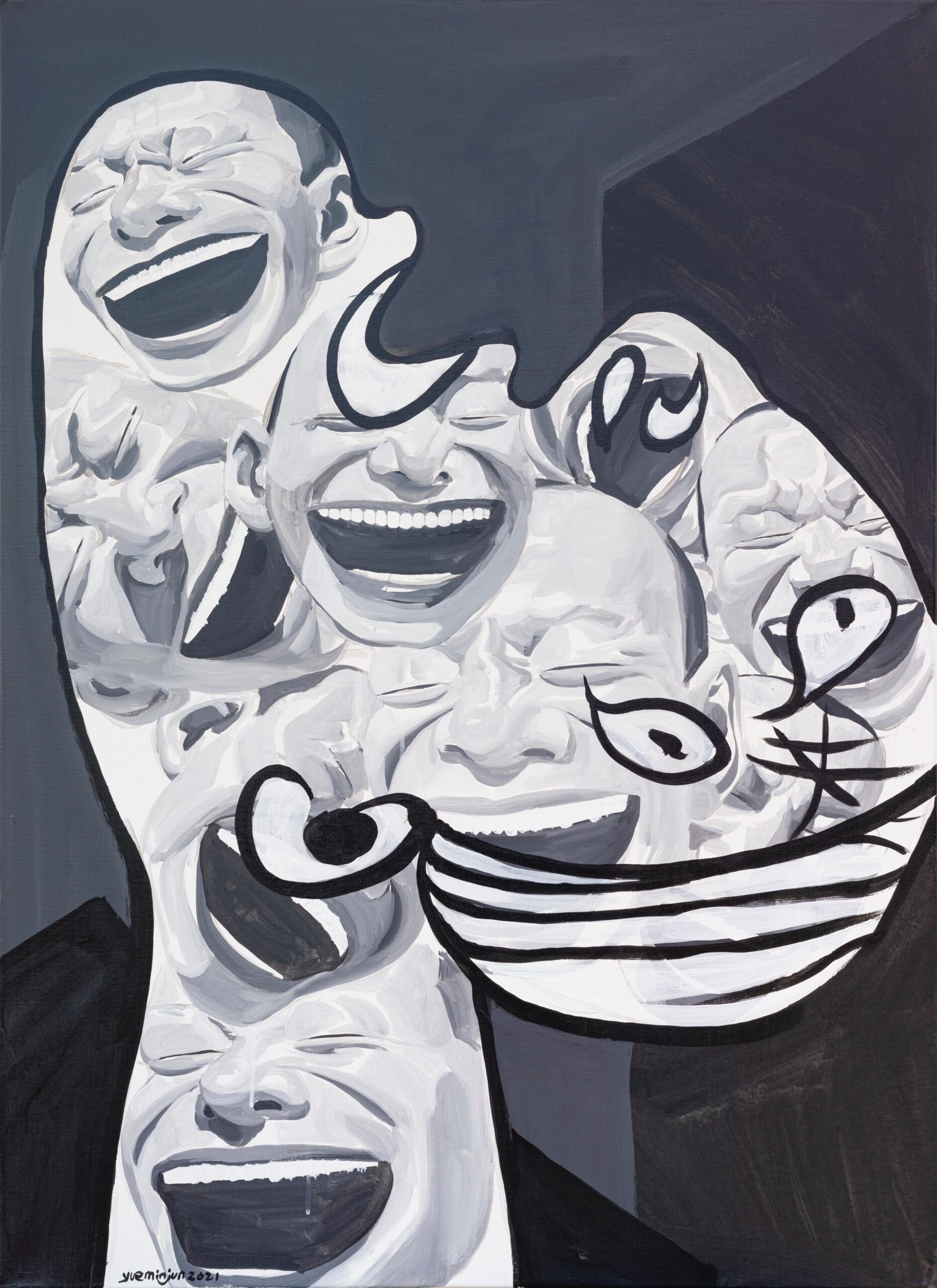
Picasso Series-3
2021, Oil on canvas, 101 x 75 cm
Private Collection
Yu Nishimura 西村 有 (b. 1982)
Yu Nishimura (b. 1982, Kanagawa, Japan) is known for his multilayered, atmospheric paintings that draw from everyday imagery—street photography, anime, and the layered urban and natural landscapes of Japan. His compositions, at once sparse and evocative, blend a contemporary graphic sensibility with a dreamlike sense of nostalgia, capturing fleeting moments suspended between presence and memory.
Nishimura graduated from the Department of Fine Arts at Tama Art University, Tokyo, in 2004, where he studied oil painting. He continues to live and work in Kanagawa.
Recent solo and two-person exhibitions include Subject Seconds at Castle, Los Angeles (2024); Synopsis, Sadie Coles HQ, London (2024); Sleep Walk, ARCH, Athens (2024); The Sequel: Twin Boat Songs – Verdigris Vessel with Takezaki Kazuyuki at MonET, Niigata (2023); December Light, La Società delle Api, Monaco (2023); State of Stillness, Crèvecœur, Paris (2022); Ebb Tide, Dawid Radziszewski Gallery, Warsaw (2021); and Aperto 09: Nishimura Yu, 21st Century Museum of Contemporary Art, Kanazawa (2018).
In 2025, Nishimura was announced as part of David Zwirner’s roster of represented artists, debuting with a solo exhibition, Clearing Unfolds, at the gallery’s New York location.
His work is held in major institutional collections worldwide, including the 21st Century Museum of Contemporary Art, Kanazawa; Musée d’Art Moderne de Paris; Centre Pompidou, Paris; Los Angeles County Museum of Art; Institute of Contemporary Art, Miami; Rubell Museum, Miami; Long Museum, Shanghai; M Woods Museum, Beijing; Fukuda Art Museum, Kyoto; and Lafayette Anticipations – Fonds de dotation Famille Moulin, Paris.
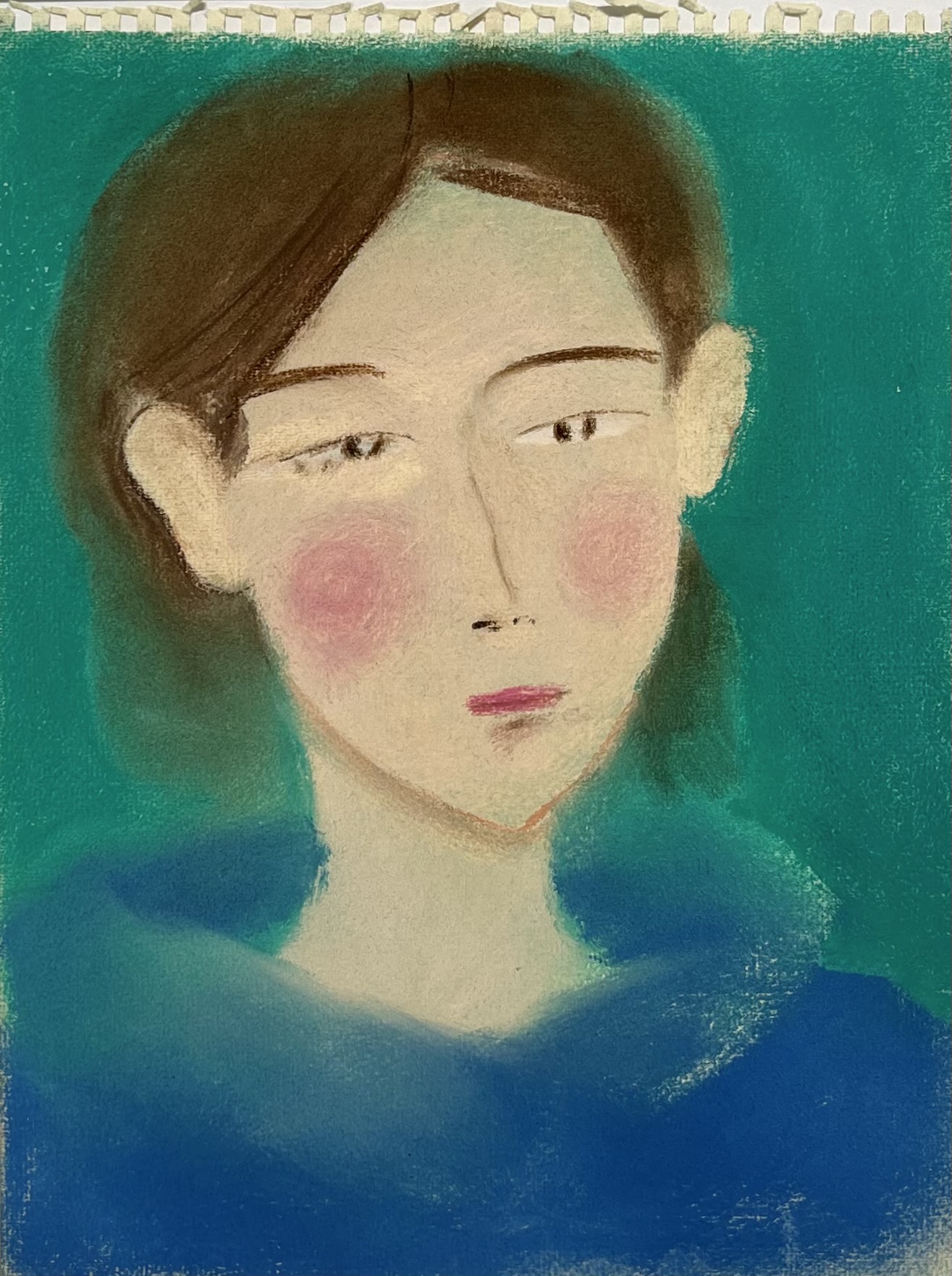
Untitled
2024, Pastel on paper, 31.4 x 23.6 cm
Private Collection
Zeng Jianyong 曾健勇 (b. 1971)
Zeng Jianyong is a contemporary Chinese ink artist known for his distinctive reinterpretation of traditional ink painting. His early work focused on portraits of children, diverging from conventional subjects to establish a personal idiom within the realm of neo-ink art. Through these psychologically charged images, Zeng employs metaphor and social symbolism to explore deeper spiritual dimensions and provoke critical reflection.
Drawing upon the foundational principles of classical Chinese painting, Zeng observes and reimagines nature as a pathway to artistic liberation. His recent practice has evolved from surrealist-inflected narratives to large-scale “painting theaters”—expansive compositions that transcend specific subject matter. In these works, Zeng shifts his attention toward the ontology of painting itself, with a particular emphasis on the study of pictorial space and the expressive potential of ink within spatial and conceptual frameworks.
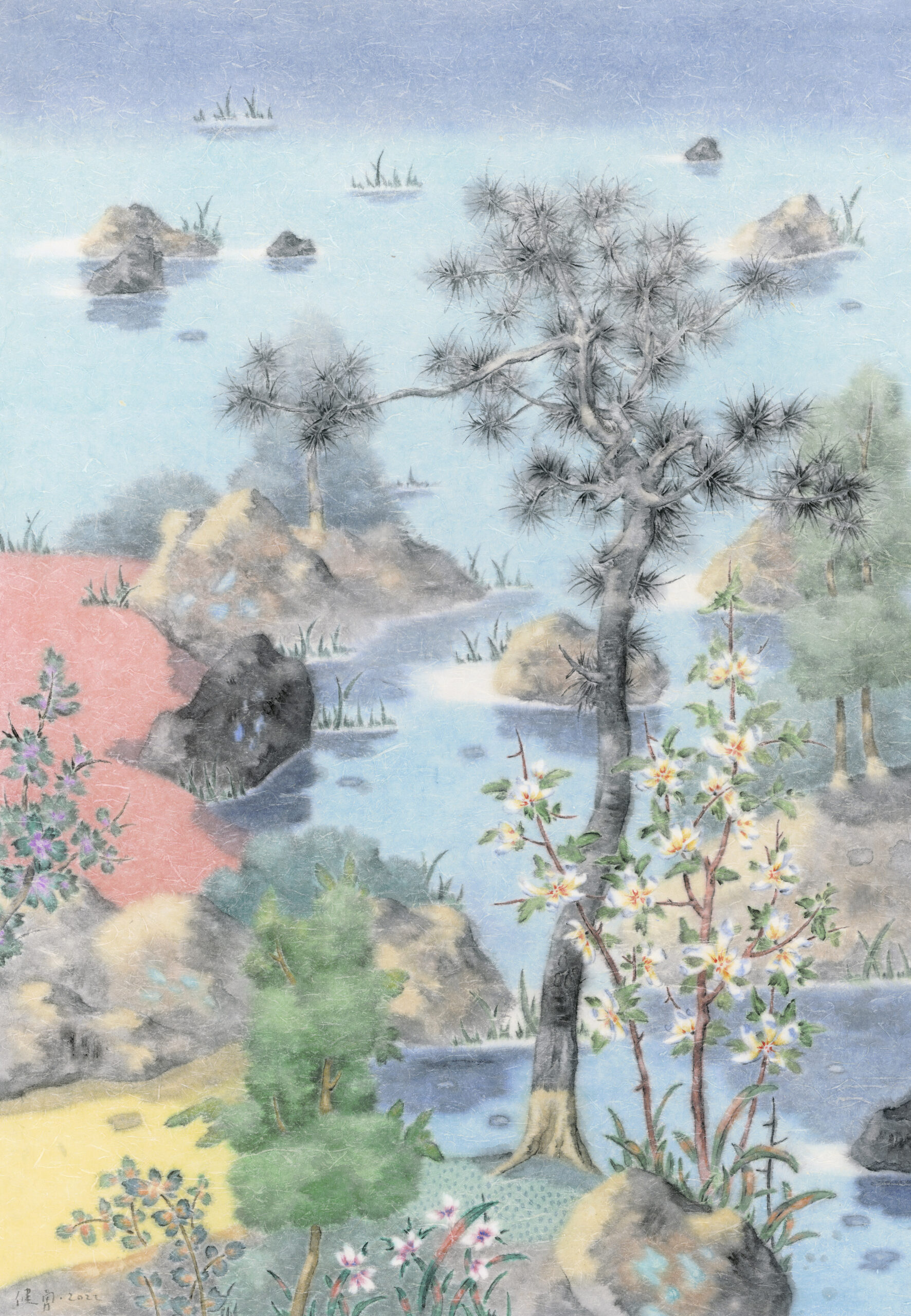
Folk Landscape – Grace
2022, Ink and colour on paper, 130 x 90 cm
Gallery Collection
Zhang Xiaogang 张晓刚 (b. 1958)
Born in Kunming, China in 1958, Zhang Xiaogang was sent to the countryside as a youth during the Cultural Revolution. Following the end of this turbulent era, he was admitted to the Department of Oil Painting at the Sichuan Fine Arts Institute in 1977. As one of the most important figures in contemporary Chinese art, Zhang is widely recognised for his profound exploration of collective memory and individual emotion.
His seminal Bloodline series, begun in the mid-1990s, adopts the visual language and portrait style of the revolutionary era to reconstruct the emotional ties between society and family. Through this, Zhang pioneered a highly recognisable symbolic vocabulary within Chinese contemporary art.
Zhang’s work not only captures the psychological landscape of an era but also reflects deeply on the transformation of Chinese society. As a result, his practice holds high scholarly and market value in the global art scene. He has held major solo exhibitions in Beijing, New York, Paris, Tokyo, and Seoul, and participated in prestigious international exhibitions including the Venice Biennale, São Paulo Biennial, Guangzhou Triennial, and Shanghai Biennale. His works are included in numerous prominent public and private collections worldwide, such as the San Francisco Museum of Modern Art (SFMOMA), Queensland Art Gallery in Australia, Fukuoka Asian Art Museum in Japan, and the Peter Stuyvesant Foundation in the Netherlands.
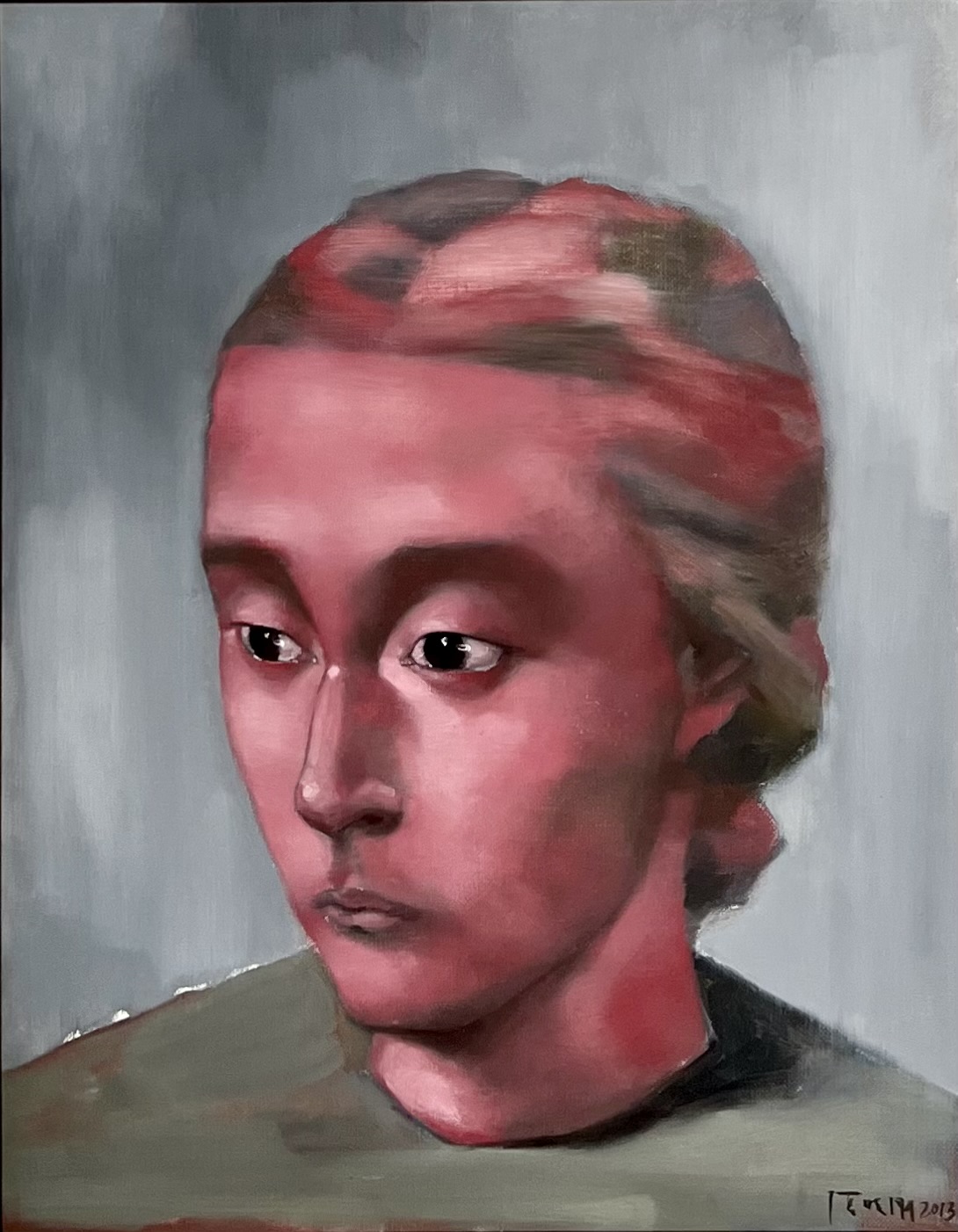
Portrait No.5
2013, Oil on canvas, 45 x 35 cm
Gallery Collection
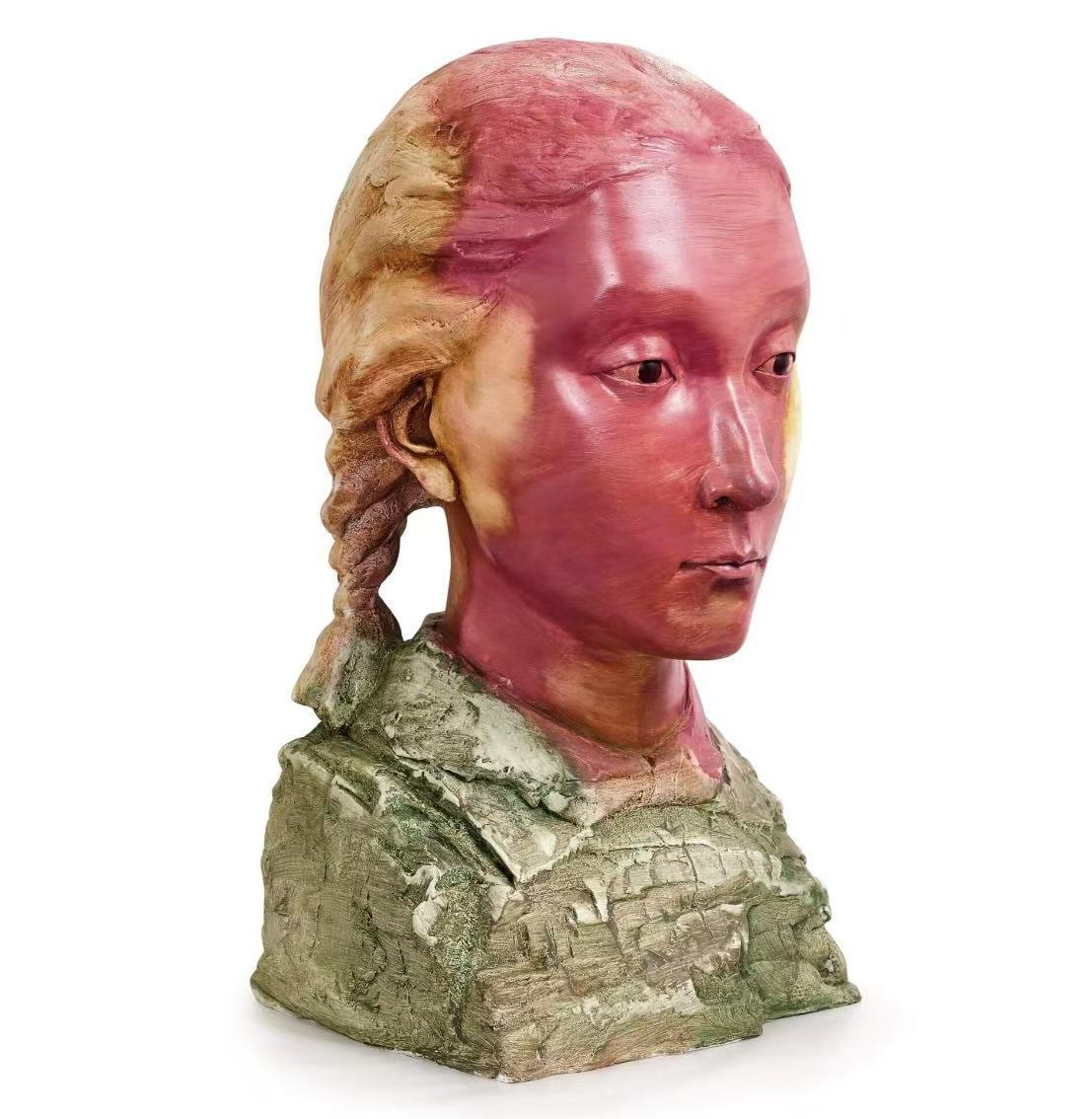
Red Girl
2013, Painted bronze, 55 x 25 x 33 cm
Gallery Collection
“I wanted to make the sculptures look and feel like paintings…I found a lot of inspiration after I came to New York; I was inspired by the colors, and by the use and treatment of texture.”
—Zhang Xiaogang
Zhang Xiaogang, best known for his Bloodline paintings, extended his portrait investigations into three dimensions with the Red Girls series—painted bronze busts evoking school-age girls with solemn, distant expressions. Cast in a style reminiscent of Cultural Revolution-era political sculpture, these works are transformed by surreal, painterly layers in vivid hues, merging sculpture and painting into a single form. These solemn young figures—part relic, part painterly portrait—embody Zhang’s enduring exploration of individual identity shaped by collective history. Their silent gaze and rich coloration invite us to consider how memory, emotion, and ideology intertwine in the faces of a generation.

